Bootcamp.com - Digestive System
1/103
There's no tags or description
Looks like no tags are added yet.
Name | Mastery | Learn | Test | Matching | Spaced |
|---|
No study sessions yet.
104 Terms
what is the chemical digestion that occurs in the mouth?
saliva (salivary amylase)
(intracellular/extracellular) digestion is the main type of digestion in humans
extracellular
what are the 2 types of extracellular digestion in humans?
mechanical; chemical
_____ digestion is the physical breakdown of food
mechanical
what are some examples of mechanical digestion?
chewing food with the teeth; churning or mixing of food in the stomach
Salivary amylase breaks down ____ into ____
starch; maltose
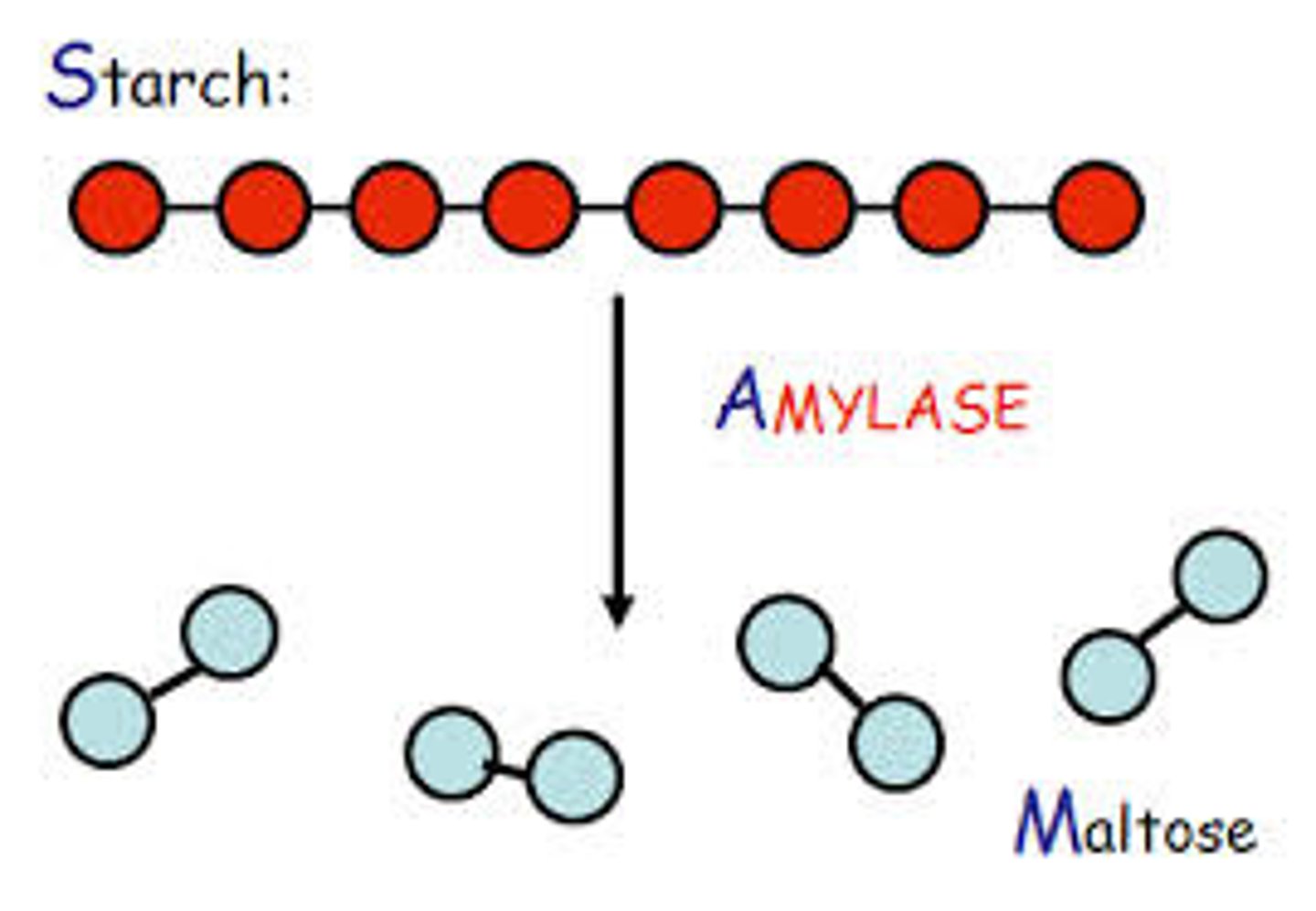
chemical digestion uses _____
chemicals/pH changes/enzymes
what are the 2 openings of the human digestive tract?
mouth and anus

food enters the human digestive tract through the mouth, and both _____ occurs here
mechanical and chemical digestionterm-106
_____ is an enzyme that begins chemical digestion of carbohydrates in the mouth.
salivary amylase (starch --> maltose)
what is a food bolus?
saliva + food = small round mass for easier transport through digestive system
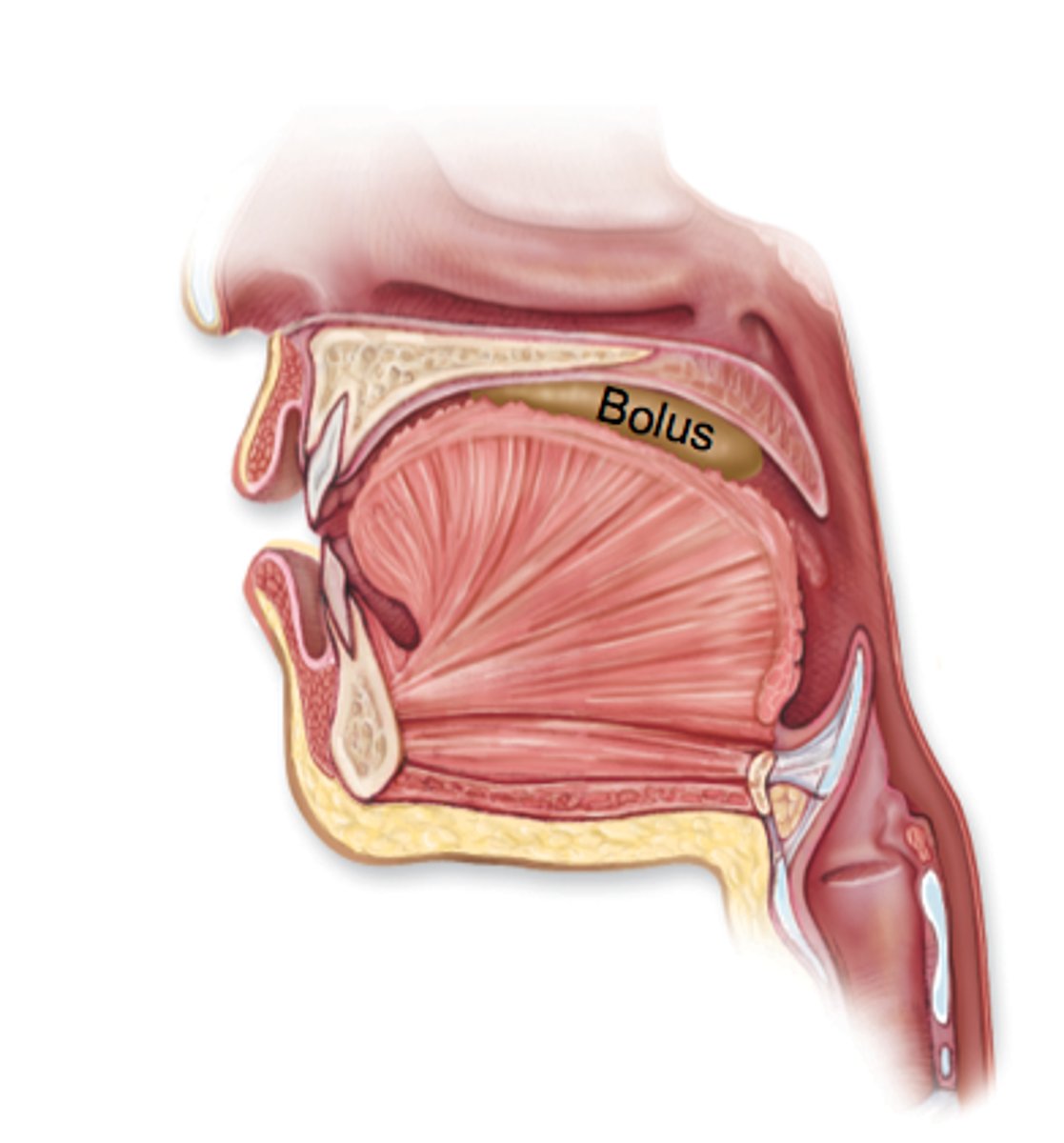
the _____ is common to the respiratory and digestive systems, and it separates into the larynx and esophagus
pharynx
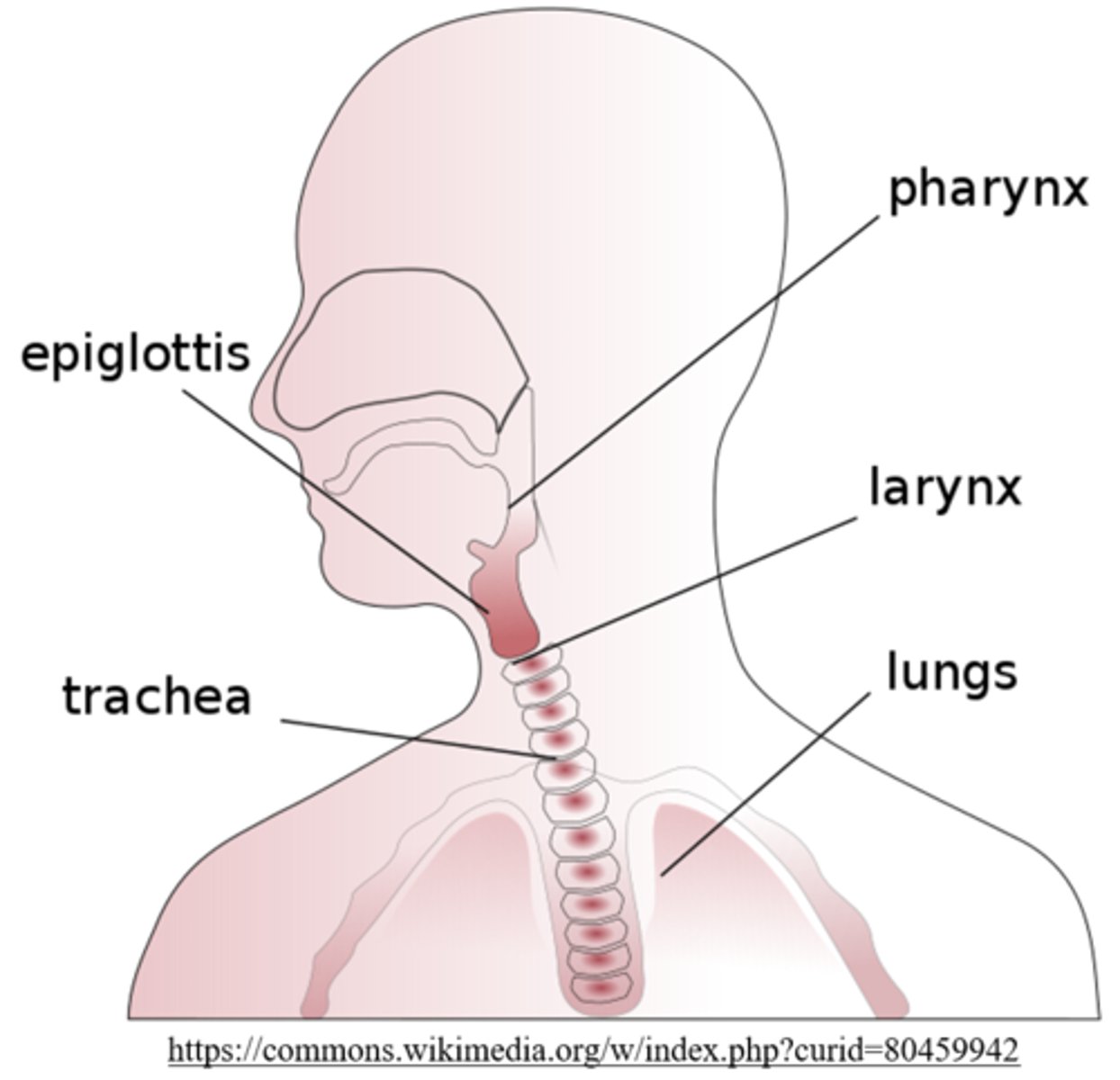
the _____ blocks the opening to the larynx (respiratory system) so food does not enter the airway
epiglottis
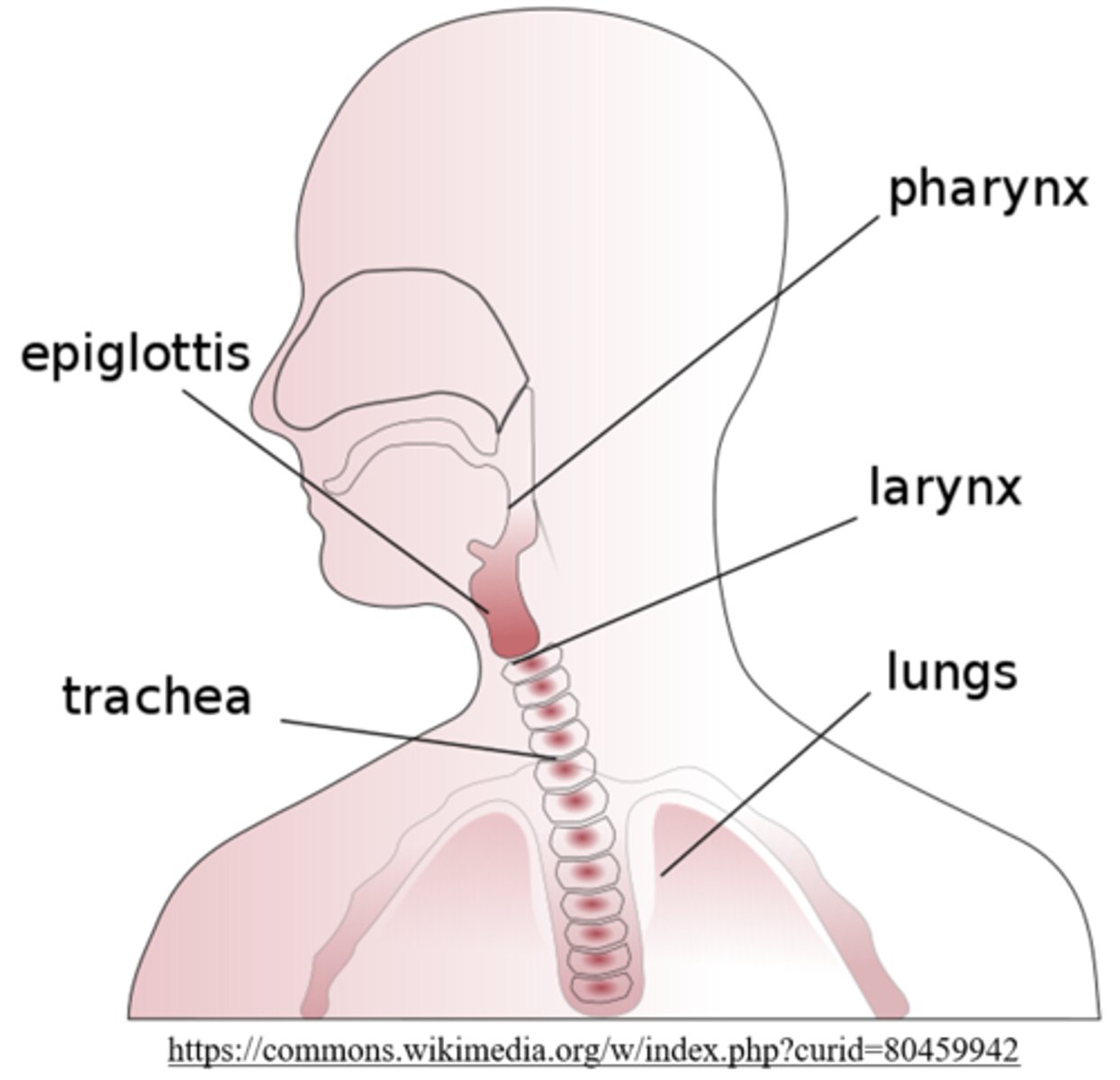
the _____ guides food from the pharynx and into the stomach
esophagus
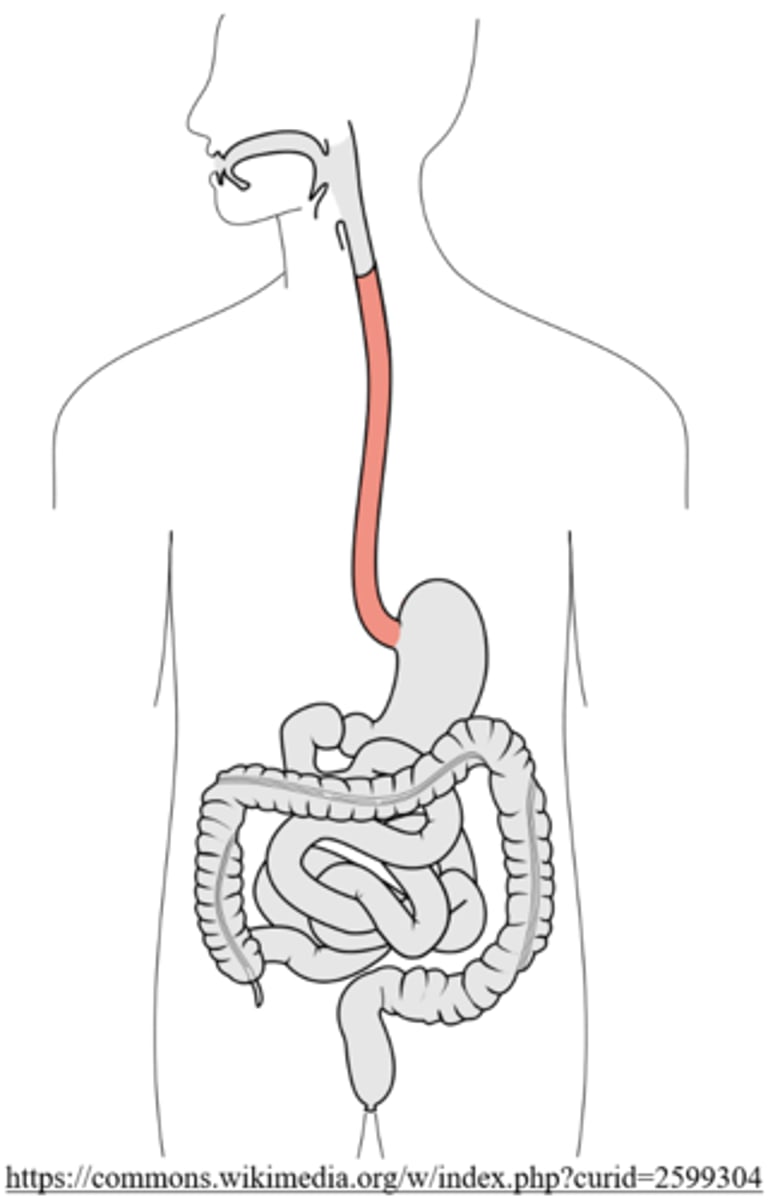
the esophagus is made of _____ muscle in its upper 1/3 and _____ muscle in its lower 1/3
skeletal (striated); smooth (not striated)
the esophagus is made of skeletal (striated) muscle in it's _____ and smooth (not striated) muscle in it's _____
upper 1/3; lower 1/3
what is peristalsis?
a rhythmic wave-like contraction that moves food boluses
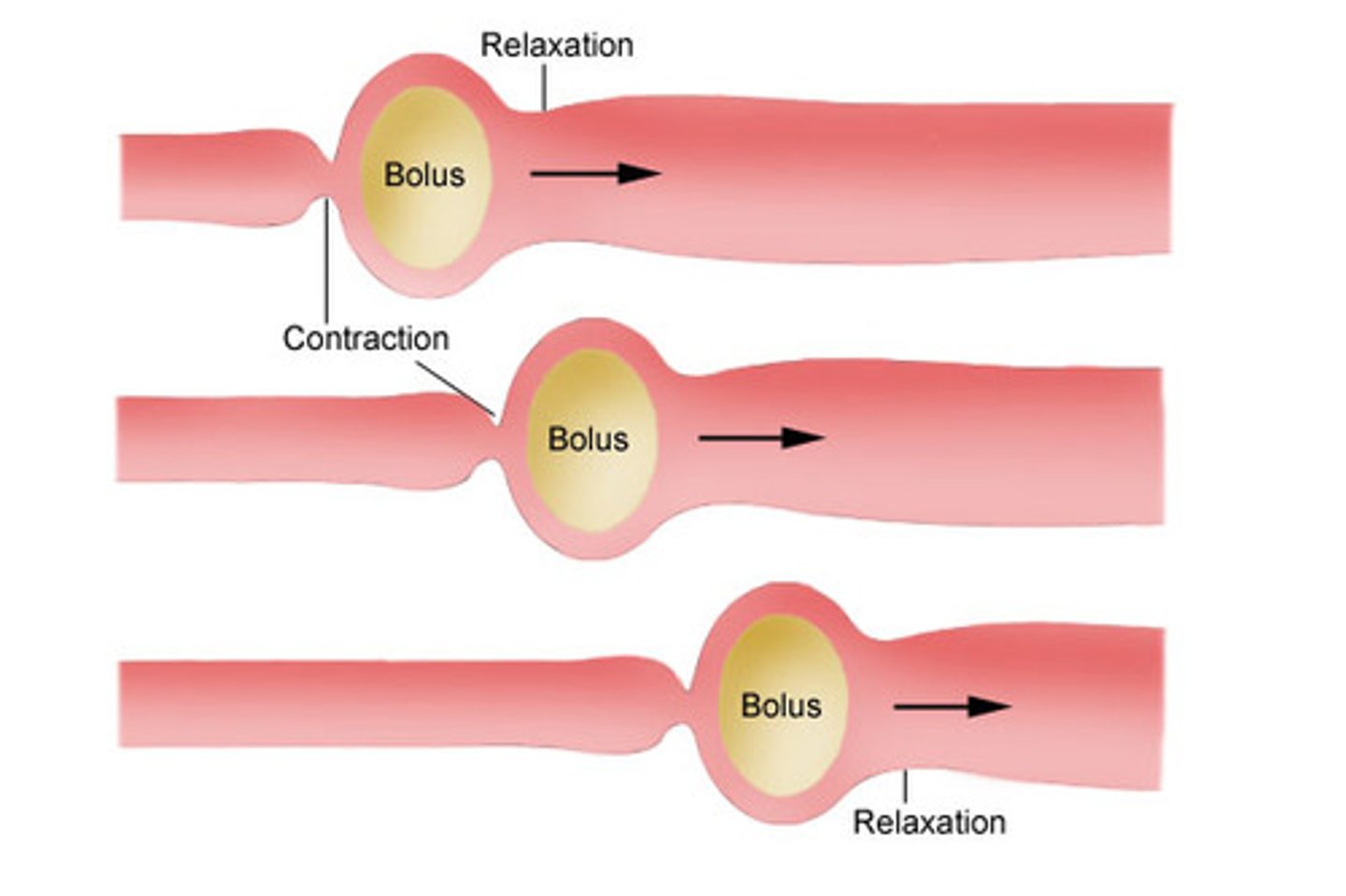
what is a sphincter?
a ring of muscles that constricts and relaxes openings
the _____ is the opening between the esophagus and the stomach
cardiac sphincter
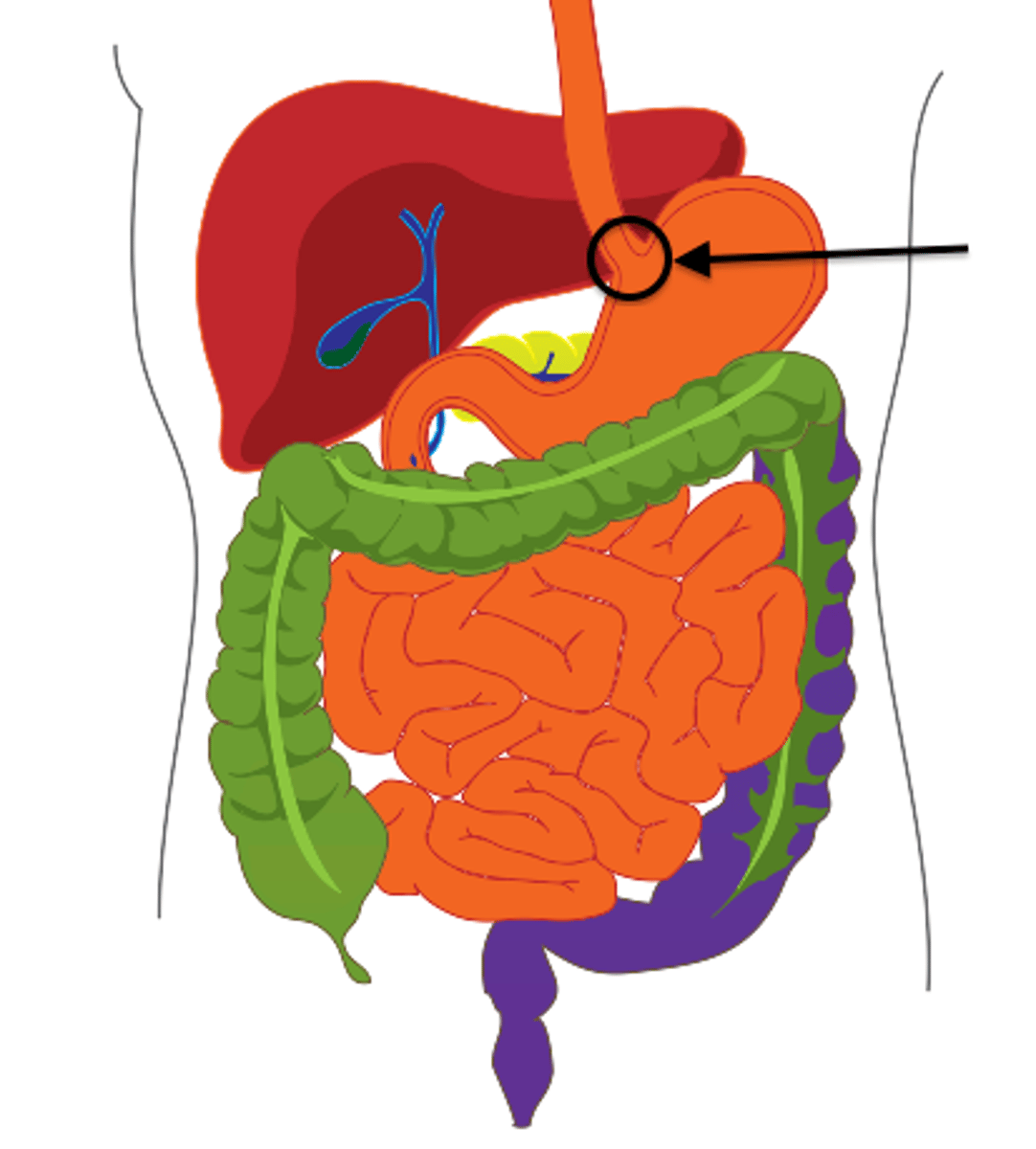
how does mechanical digestion occur in the stomach?
churning of the stomach by muscles to mix and break down the food
how does chemical digestion occur in the stomach?
the acidic pH denatures proteins and activates certain protein enzymes; lipases are enzymes that digest fats
what is the lamina propria of the stomach?
connective tissue in the lining of the stomach
what is the process that occurs when a food bolus reaches the stomach?
the stomach is distended (stretched) --> signals for G cells to release gastrin
what are the 2 main functions of gastrin?
stimulates parietal cells to release gastric juice; stimulates chief cell secretions
parietal cells and chief cells are found within the _____ of the stomach
gastric glands
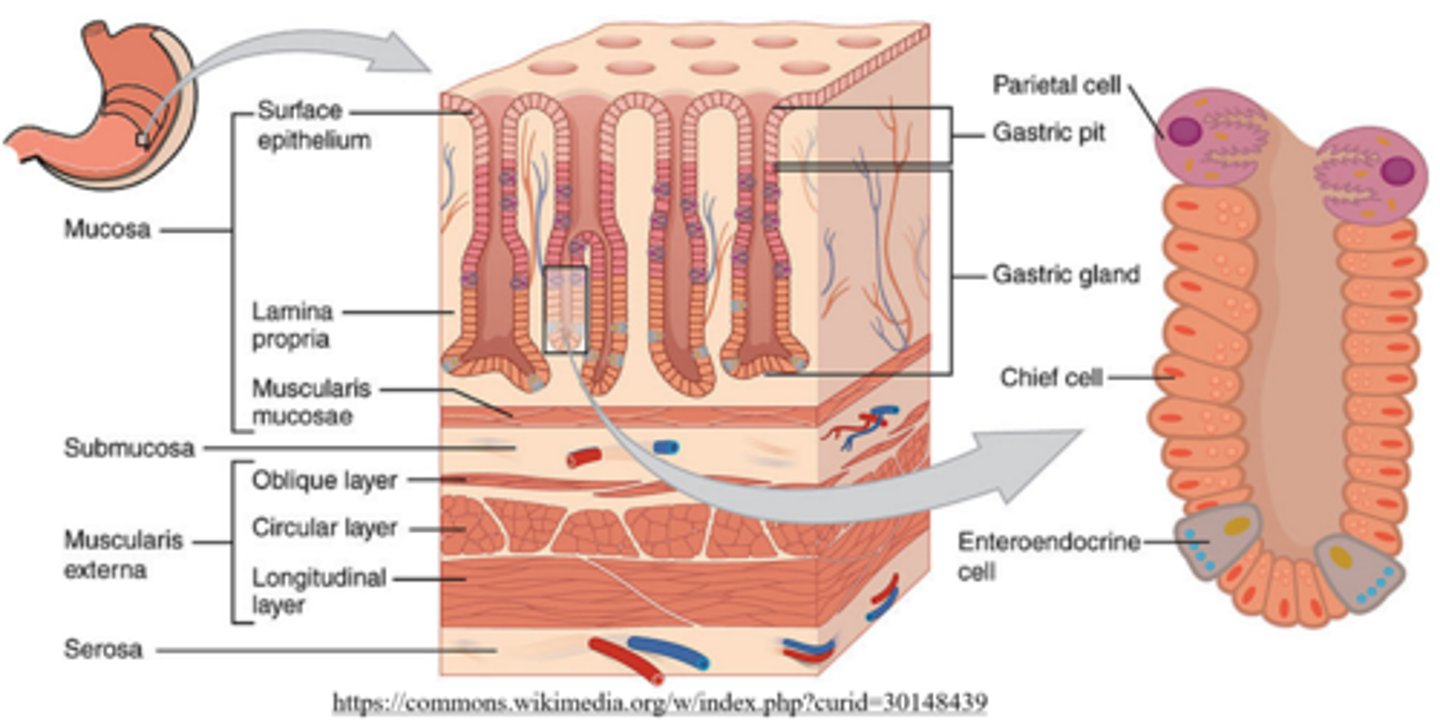
gastric juice from parietal cells is _____ with a pH of _____
acidic (HCl); 2
secretions from chief cells include _____ & _____
gastric lipase; pepsinogen
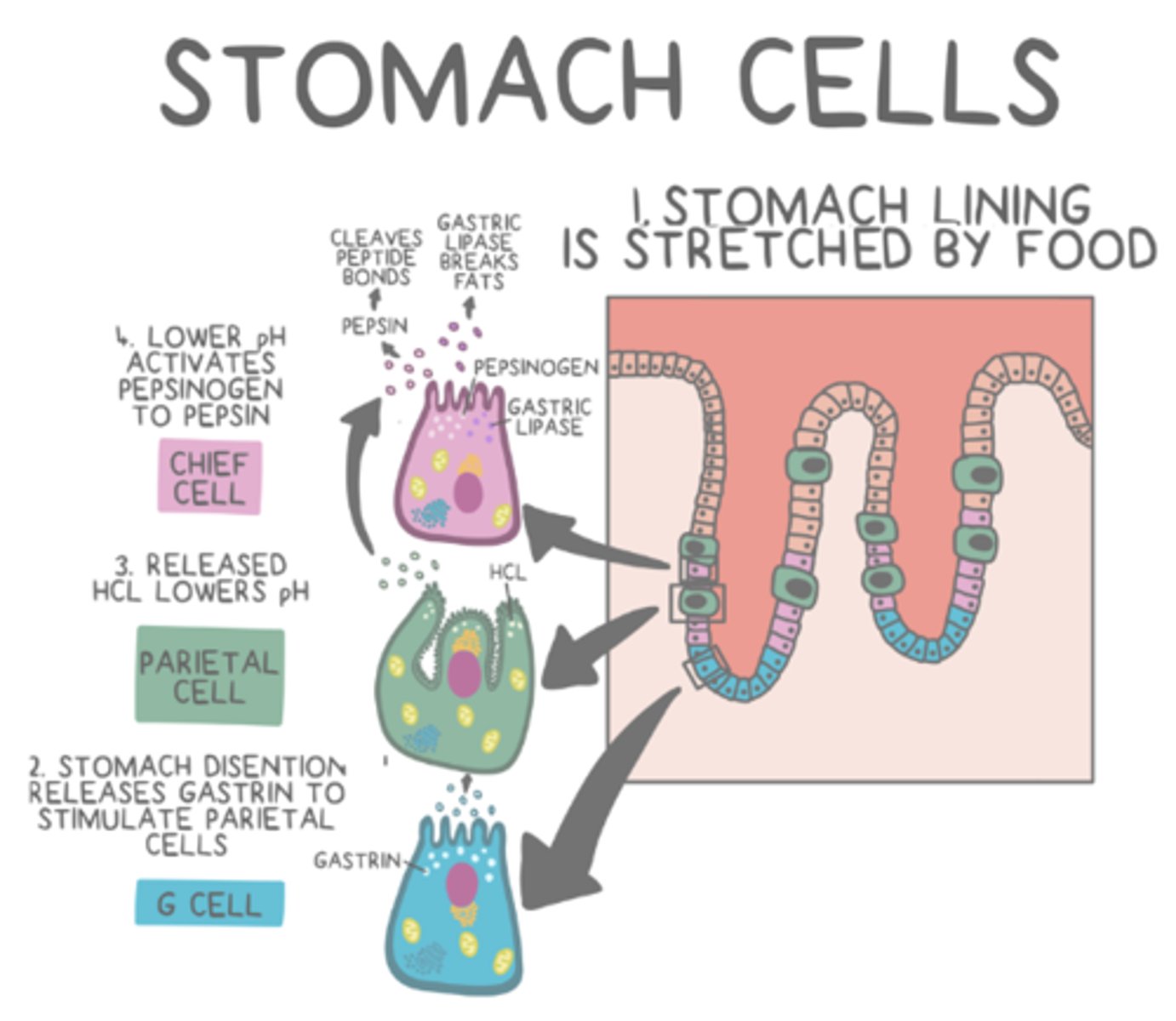
what is the role of gastric lipase from chief cells?
breakdown triglycerides --> fatty acids + monoglycerides
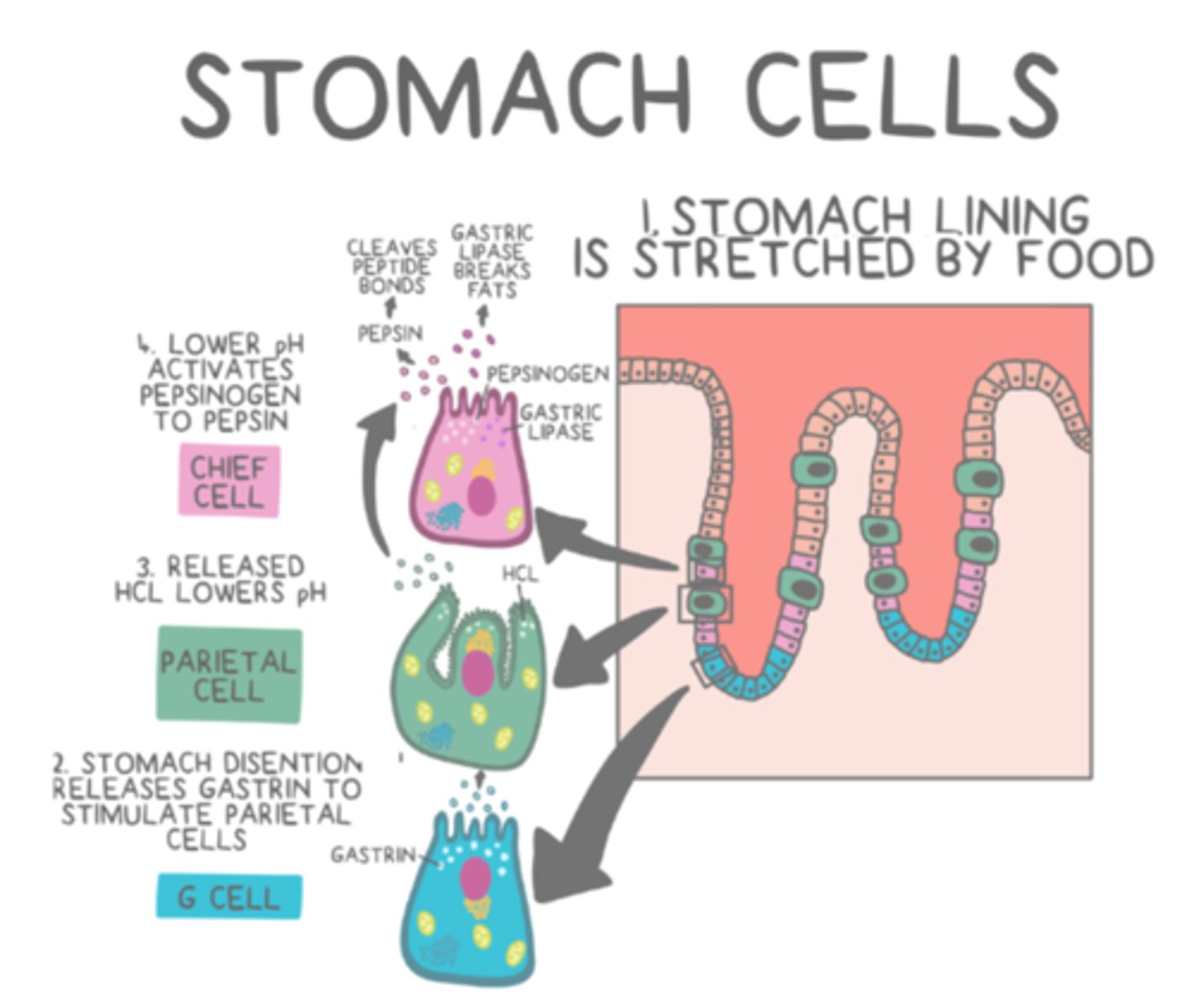
pepsinogen is a _____ that is activated to _____ when in the acidic gastric juice
zymogen; pepsin
what is a zymogen?
inactive precursor of an enzyme
what is the role of pepsin?
cleaves peptide bonds to take proteins --> amino acids
what is the optimal pH for pepsin?
about 2
why is it essential for protein-digesting enzymes to be inactive zymogens while in the cell that produces them?
otherwise the cell would digest itself
_____ secrete mucus to lubricate and protect the stomach lining from acid
mucous cells

what are peptic ulcers?
open sores created on the digestive system epithelium, due to inadequate mucus protection --> acid corrosion
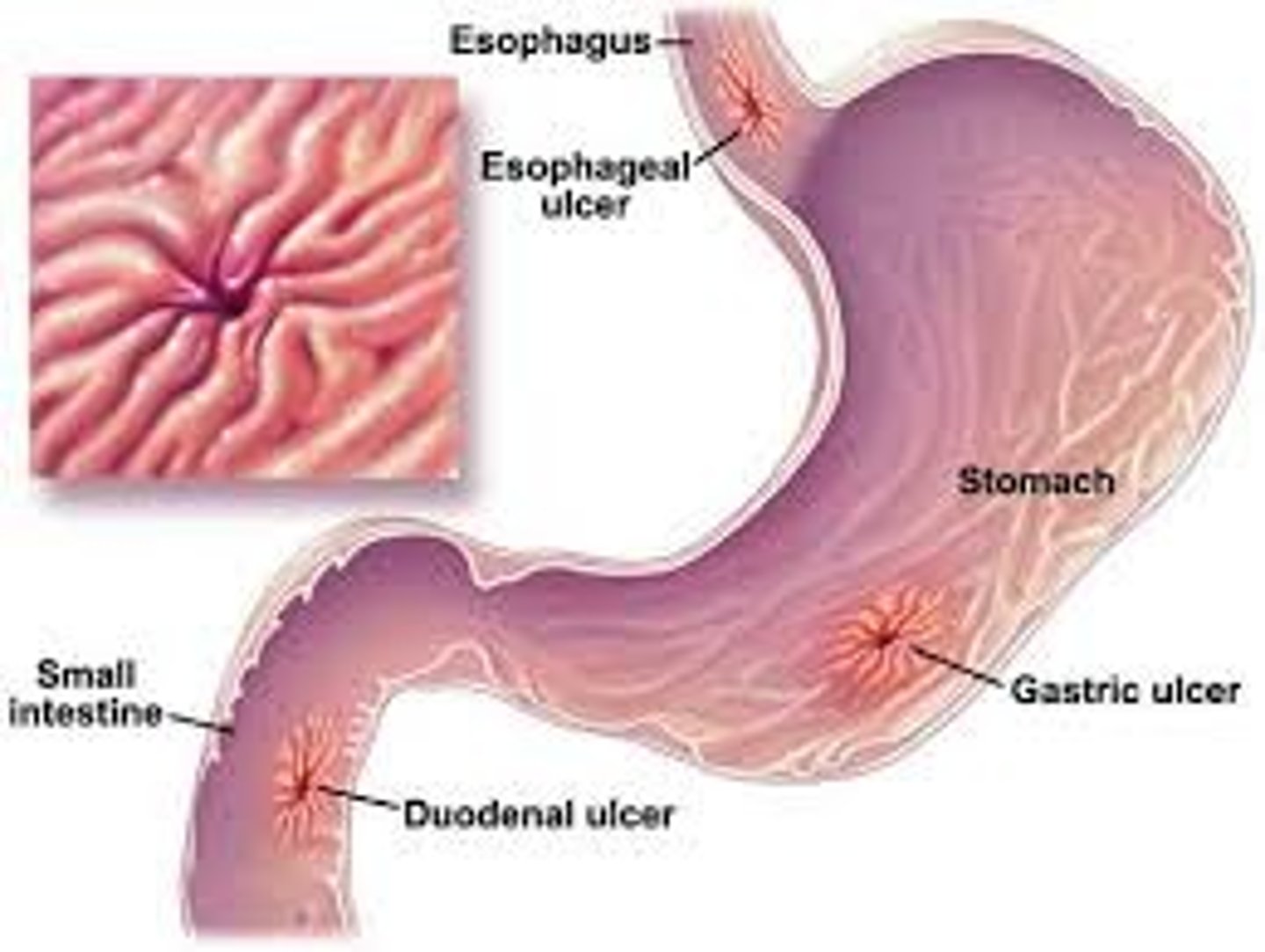
what causes acid reflux?
stomach acid moves backwards into the esophagus through cardiac sphincter
why does acid reflux burn?
the esophagus does not have mucous cells
what are some benefits of stomach acid?
kill bacteria; denature proteins; pepsin function
_____ is an acidic, semi-digested food mixture
chyme
what is the pyloric sphincter?
the opening through which chyme leaves the stomach and enters the small intestine
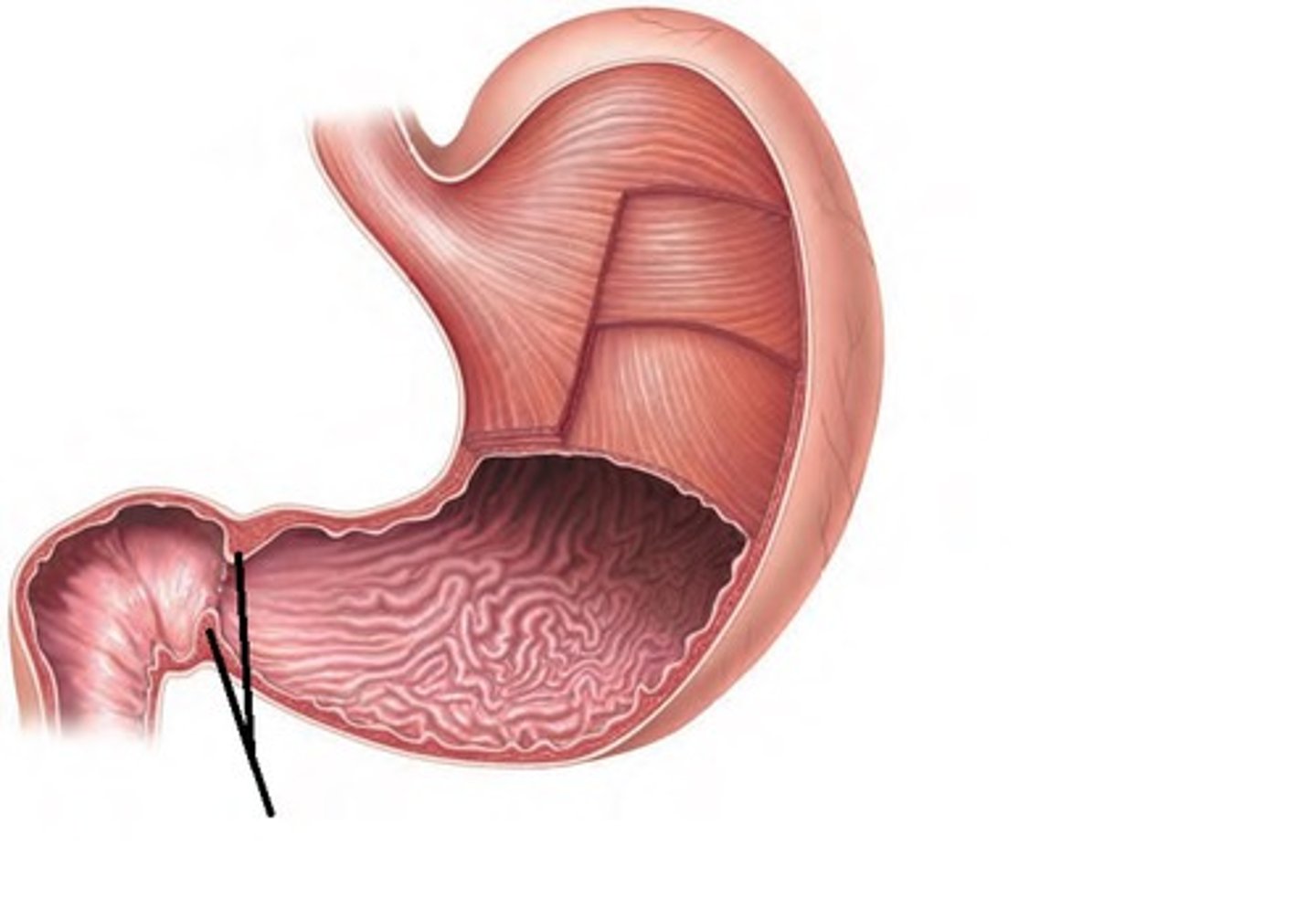
90% of digestion and nutrient absorption occurs in the _____
small intestine
what are the 3 sections of the small intestine (from closest to the stomach to furthest)?
duodenum; jejunum; ileum
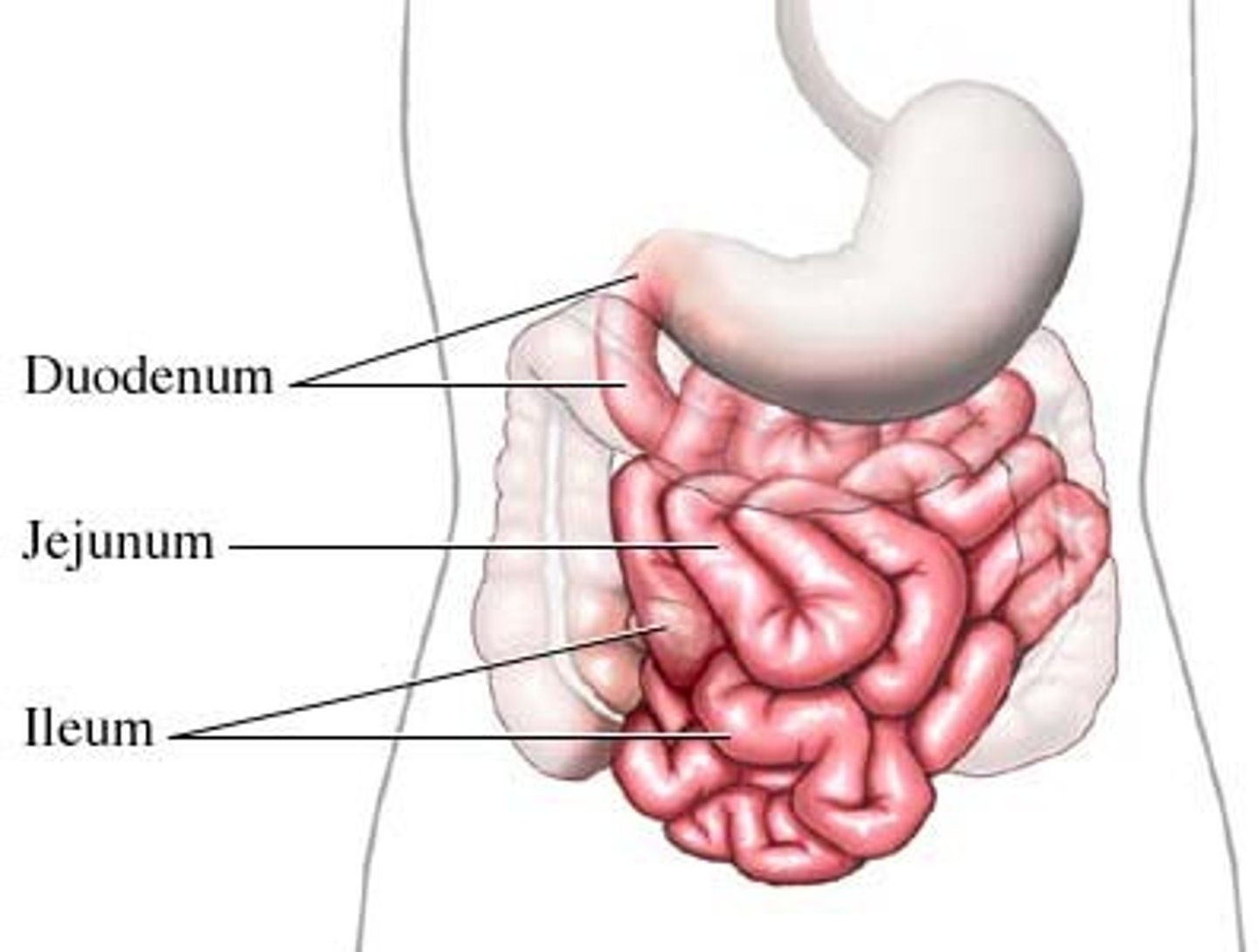
what is the main function of the duodenum?
digestion
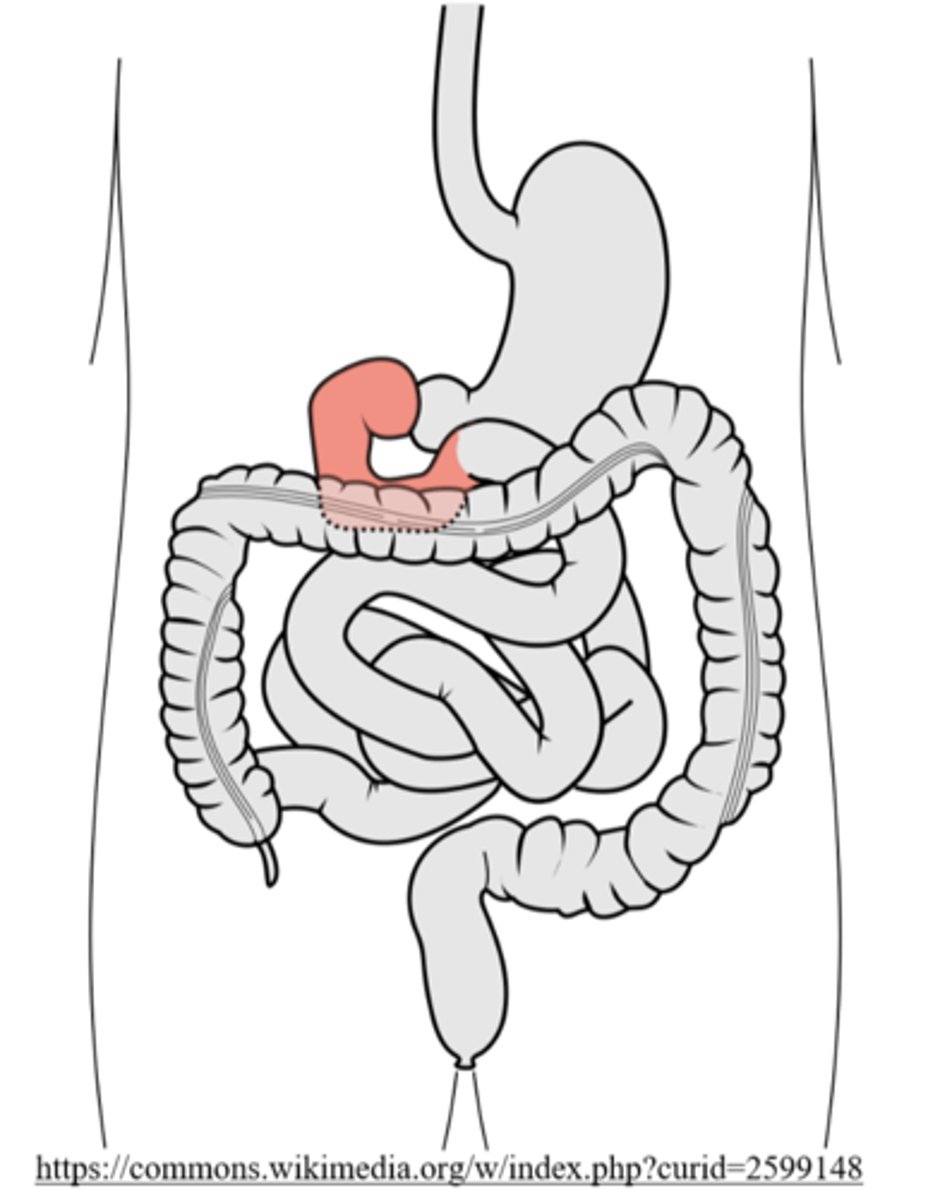
what is the main function of the jejunum and ileum?
absorption
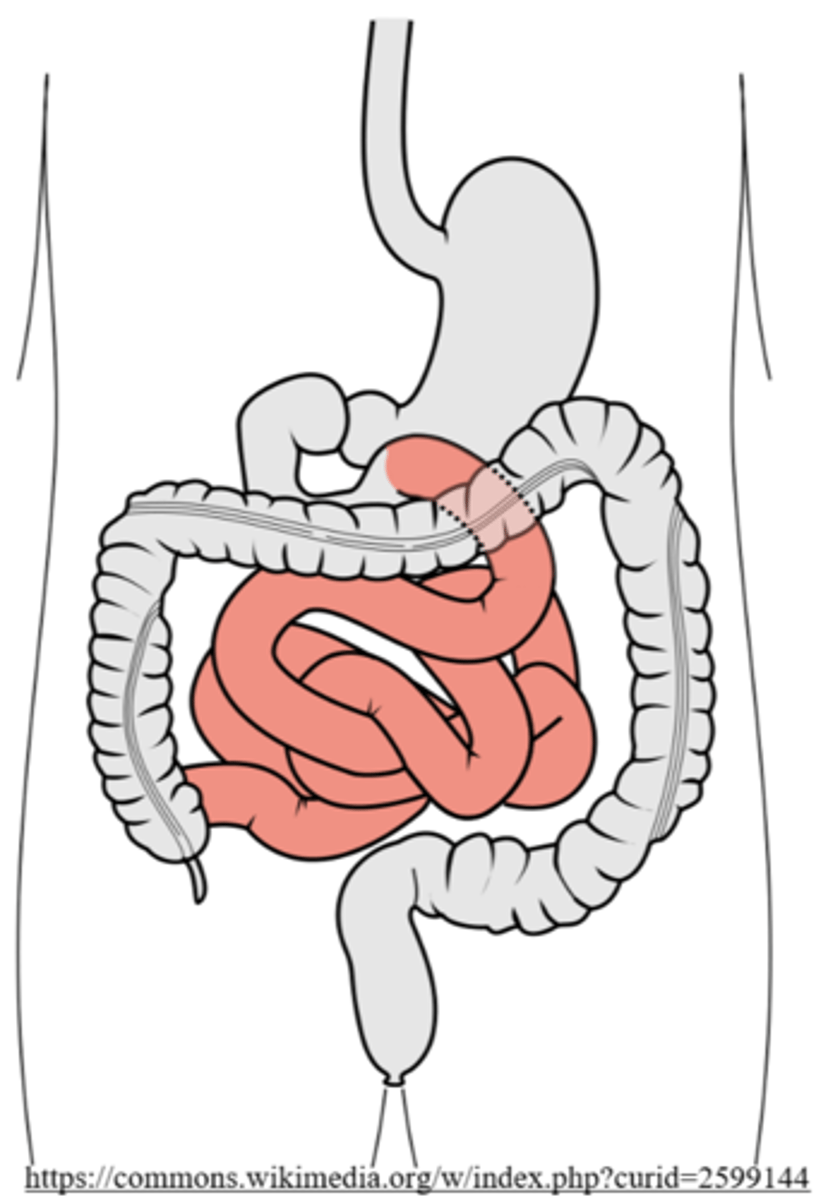
absorption of nutrients does not occur until the _____ & _____
jejunum, ileum
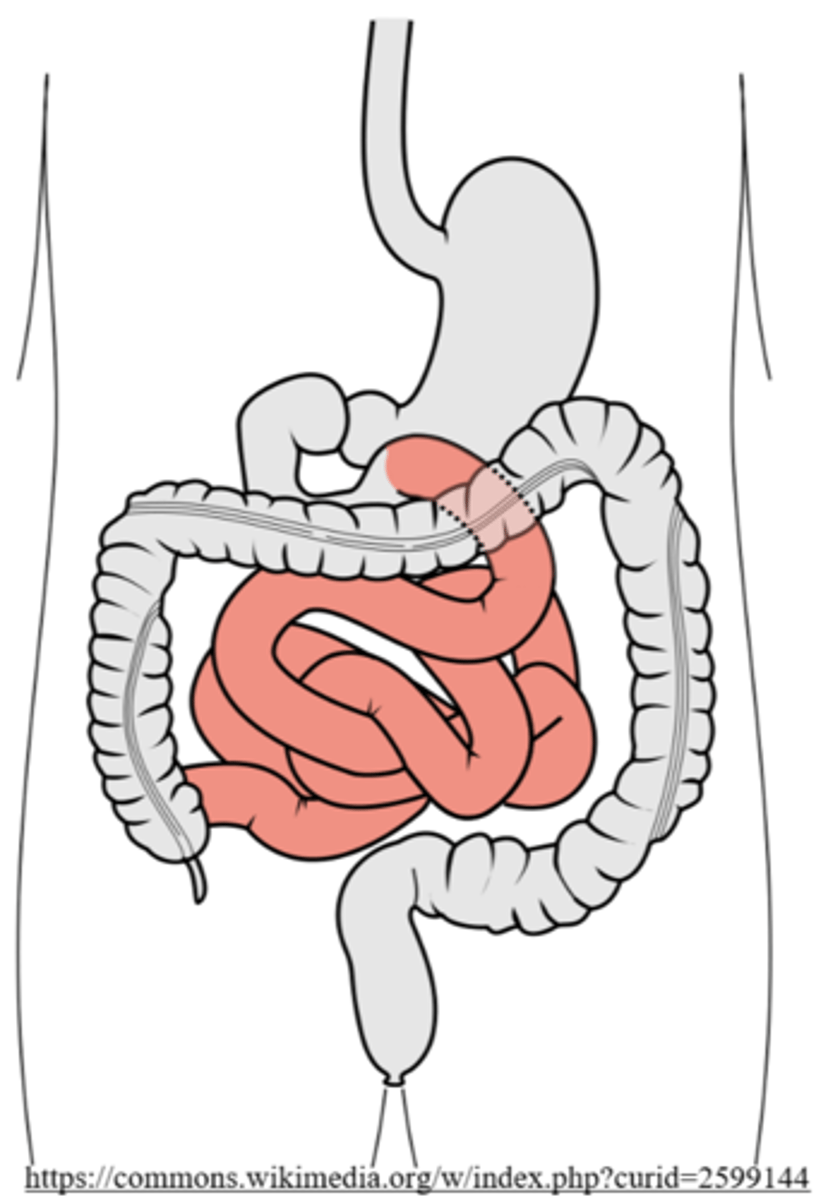
the small intestine protects itself from acidic chyme by _____ & _____
goblet cells; neutralization
goblet cells secrete mucus to protect the epithelial lining of the _____
small intestine
describe the neutralization process that occurs in the small intestine:
small intestine makes secretin when acidic chyme enters --> secretin stimulates bicarbonate into the duodenum --> bicarbonate is basic and neutralizes the acidic chyme
bicarbonate that enters the duodenum is made by the _____
pancreas
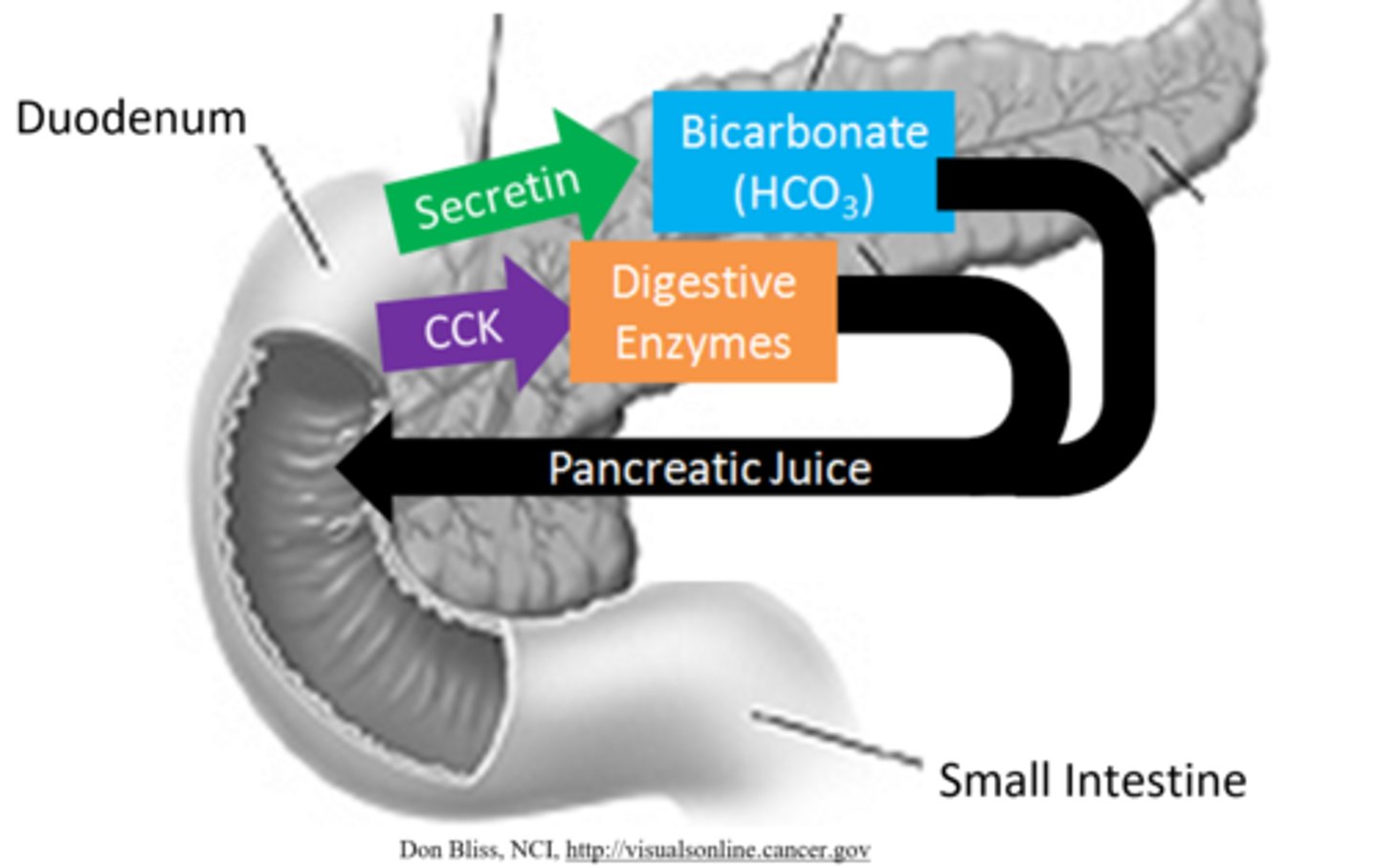
bicarbonate enters the _____ via the _____
duodenum; pancreatic duct
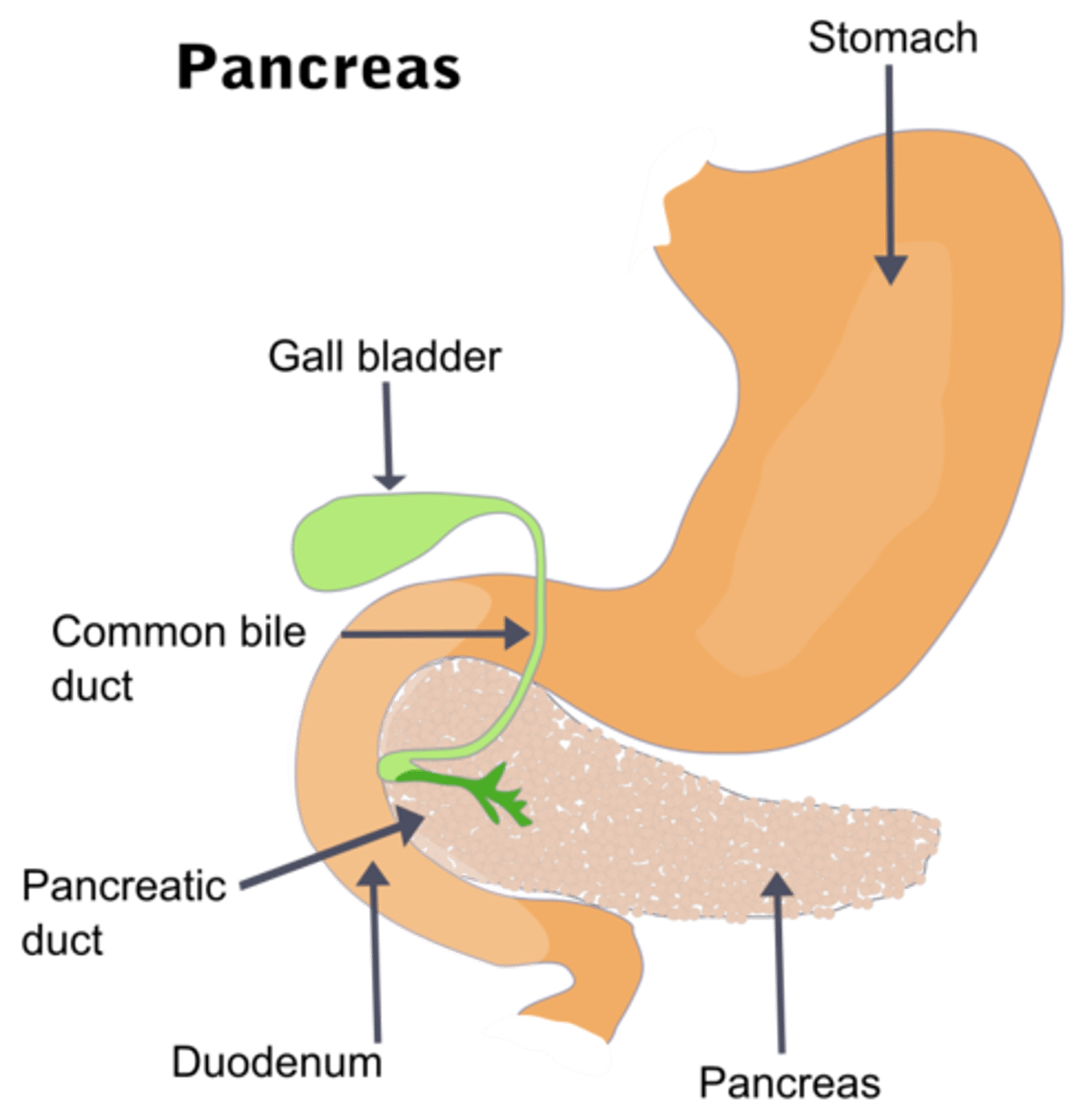
what is cholecystokinin (CCK), and what does it do?
hormone secreted by the small intestine that signals for accessory organs to help in the process of digestion
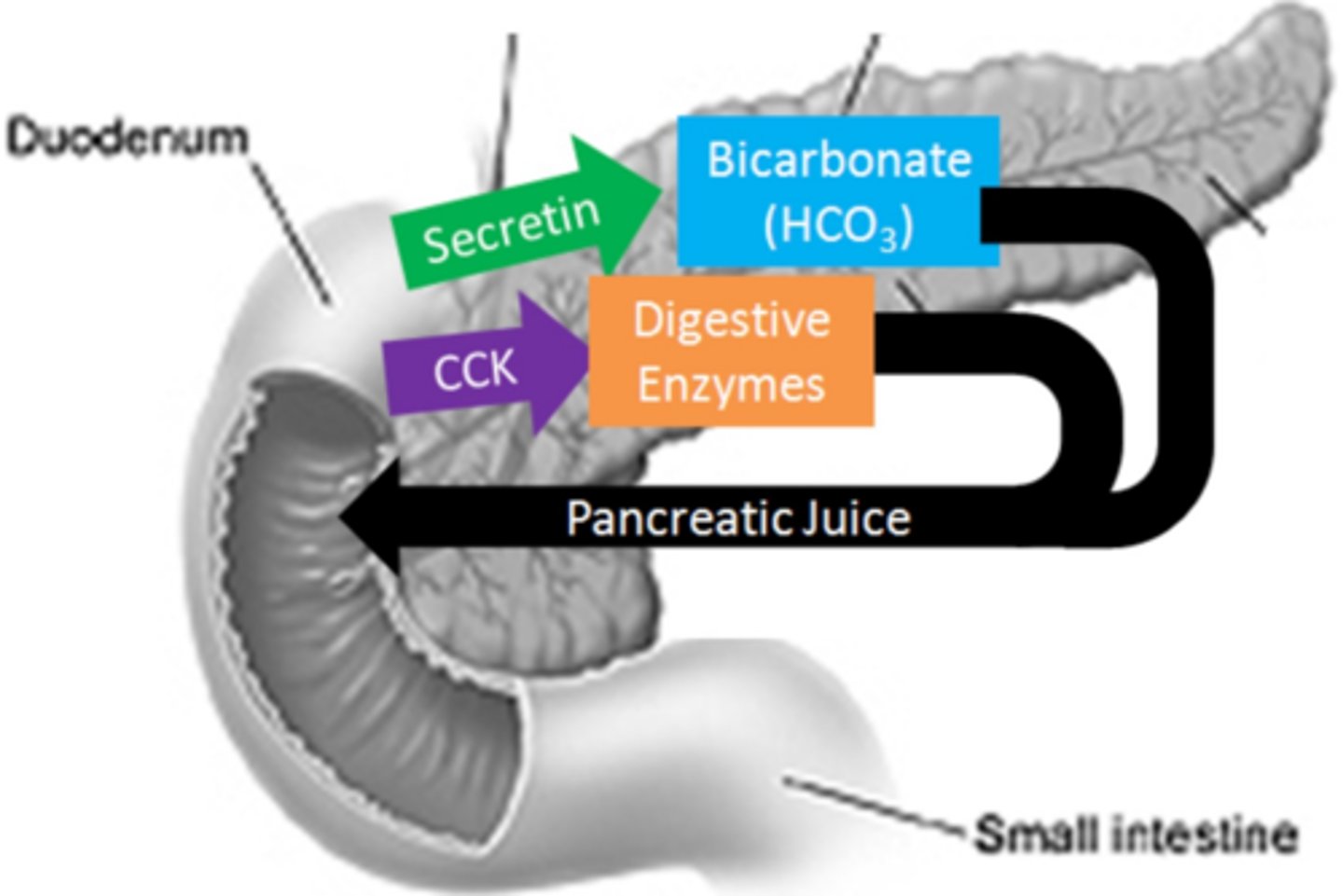
what are some of the specific effects of CCK?
slows gastric emptying; stimulates pancreas to release digestive enzymes; stimulates gallbladder to release bile
does the gallbladder make bile?
no, it is made from cholesterol in the liver... the liver stores bile in the gallbladder
what is the role of bile from the gallbladder?
fat emulsification
emulsification is a type of _____ digestion
mechanical
List everything the pancreas secretes
bicarbonate, pancreatic amylase, pancreatic lipase, trypsinogen, and chymotrypsinogen

the _____ secretes bicarbonate, pancreatic amylase, pancreatic lipase, trypsin, and chymotrypsin
pancreas

what is the role of pancreatic amylase?
breaks down starch --> maltose
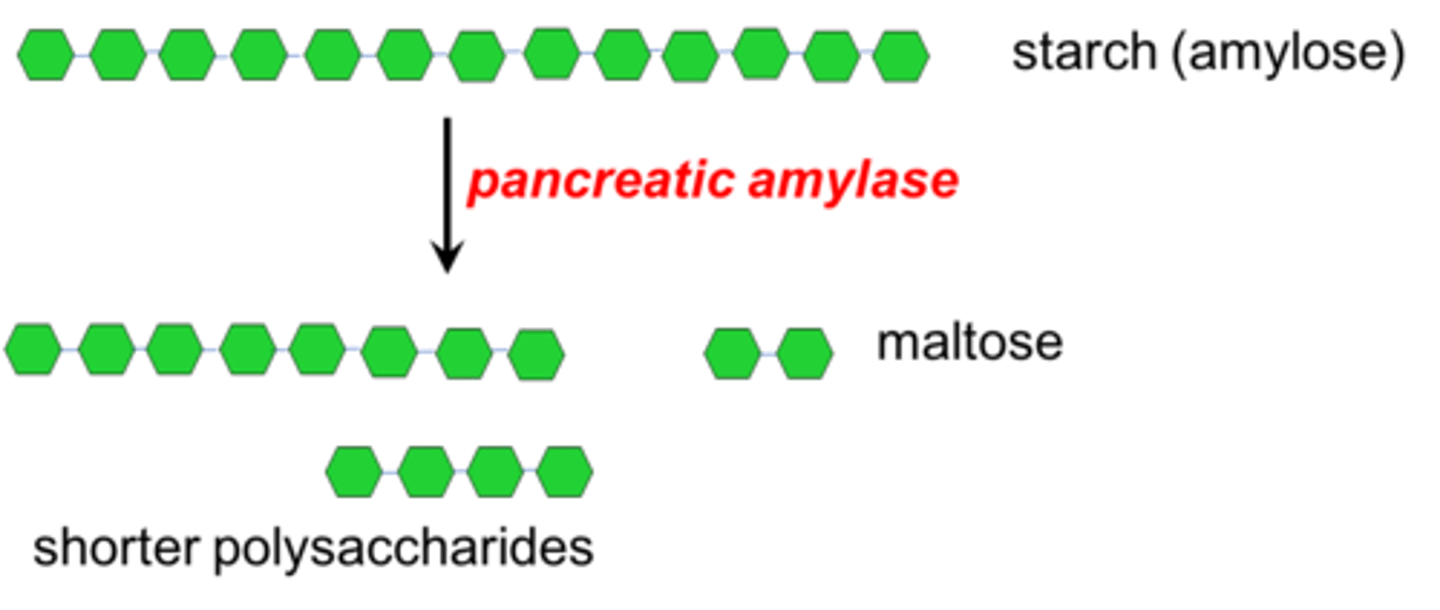
what is the role of pancreatic lipase?
acts on emulsified fats --> monoglycerides and fatty acids
enteropeptidase
an enzyme that activates trypsinogen into trypsin
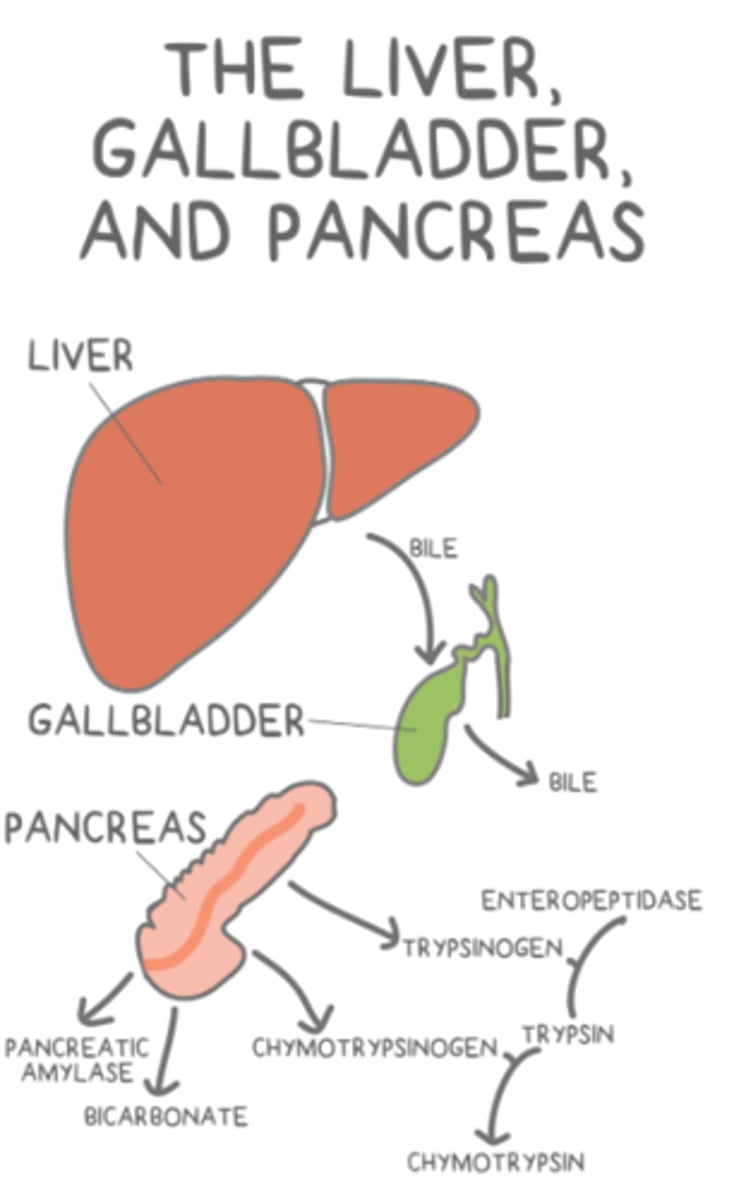
what is the zymogen form of trypsin?
trypsinogen
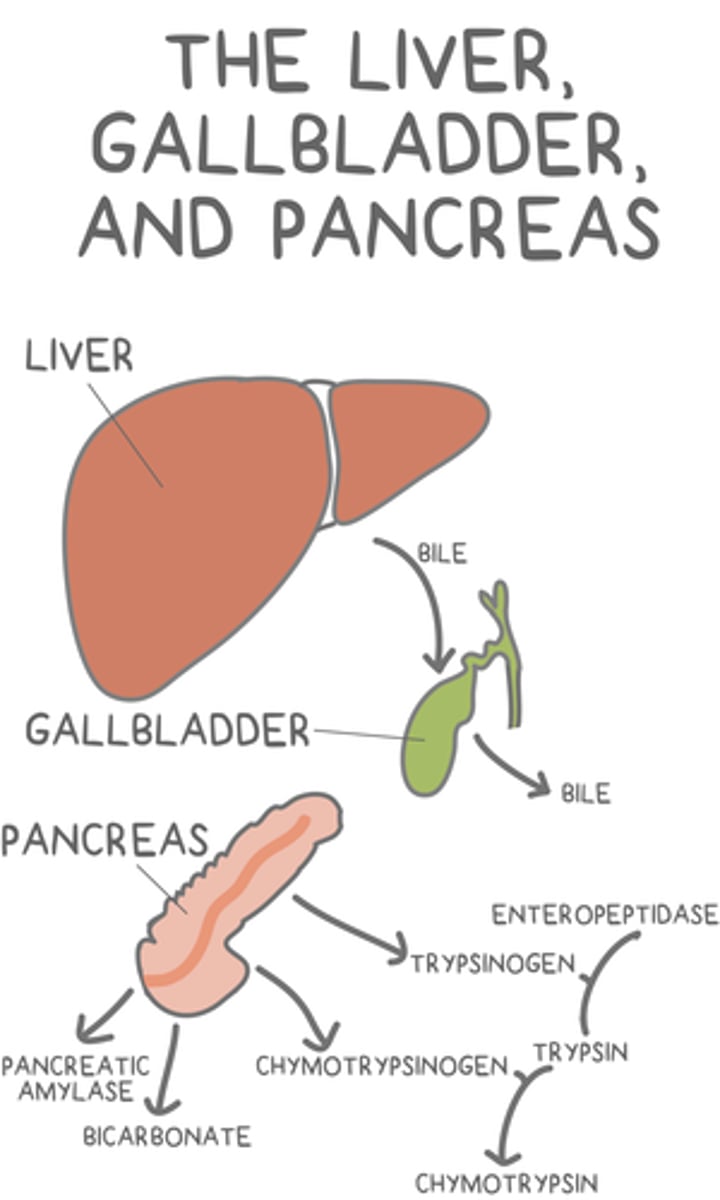
what is the zymogen form of chymotrypsin?
chymotrypsinogen
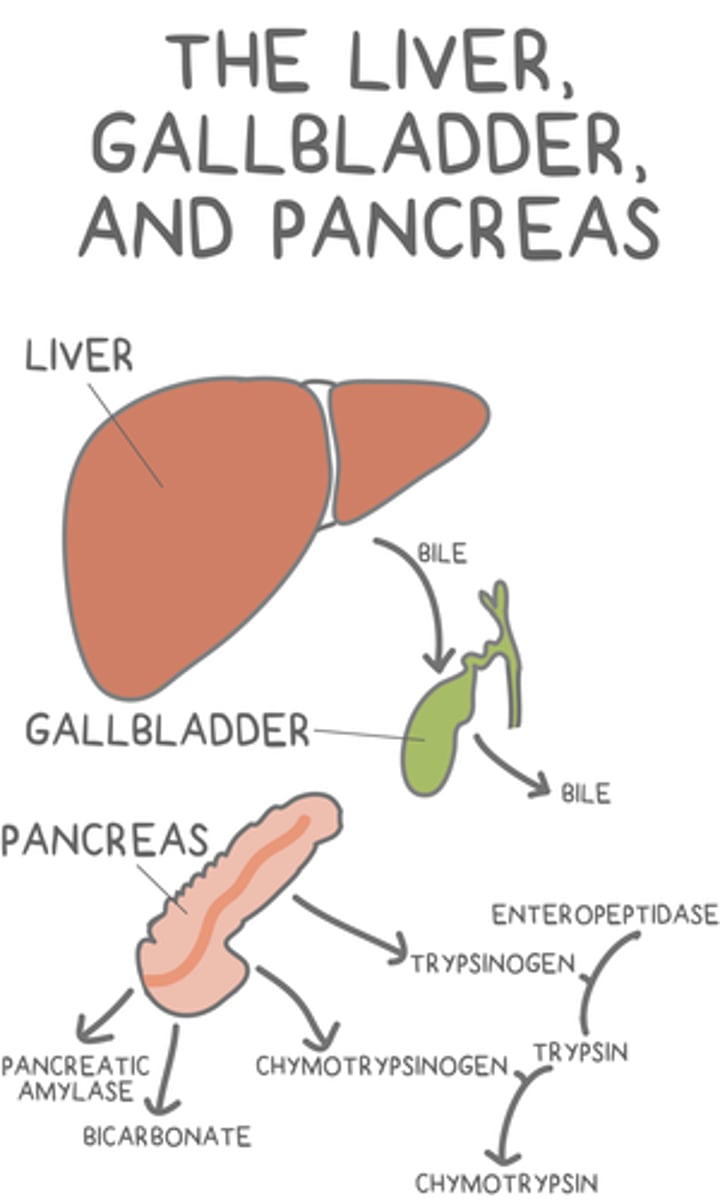
trypsin activates _____ for duodenal protein digestion
chymotrypsinogen to chymotrypsin
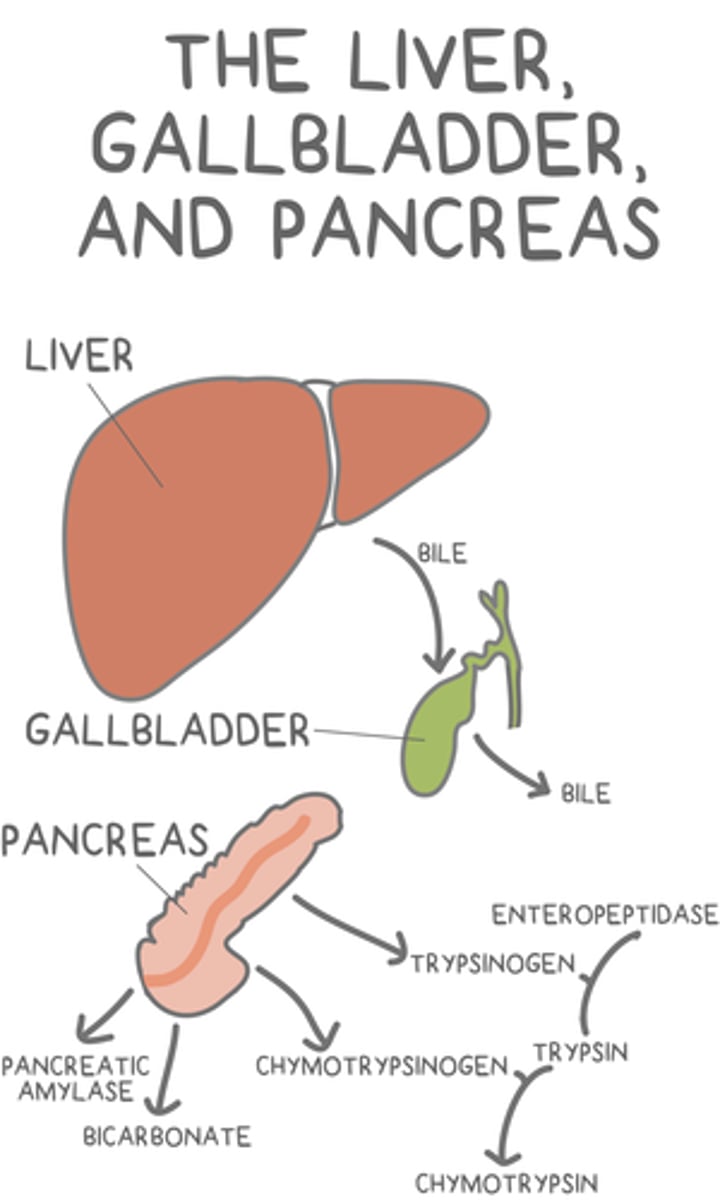
what are the finger-like projections on the walls of the small intestine?
villi
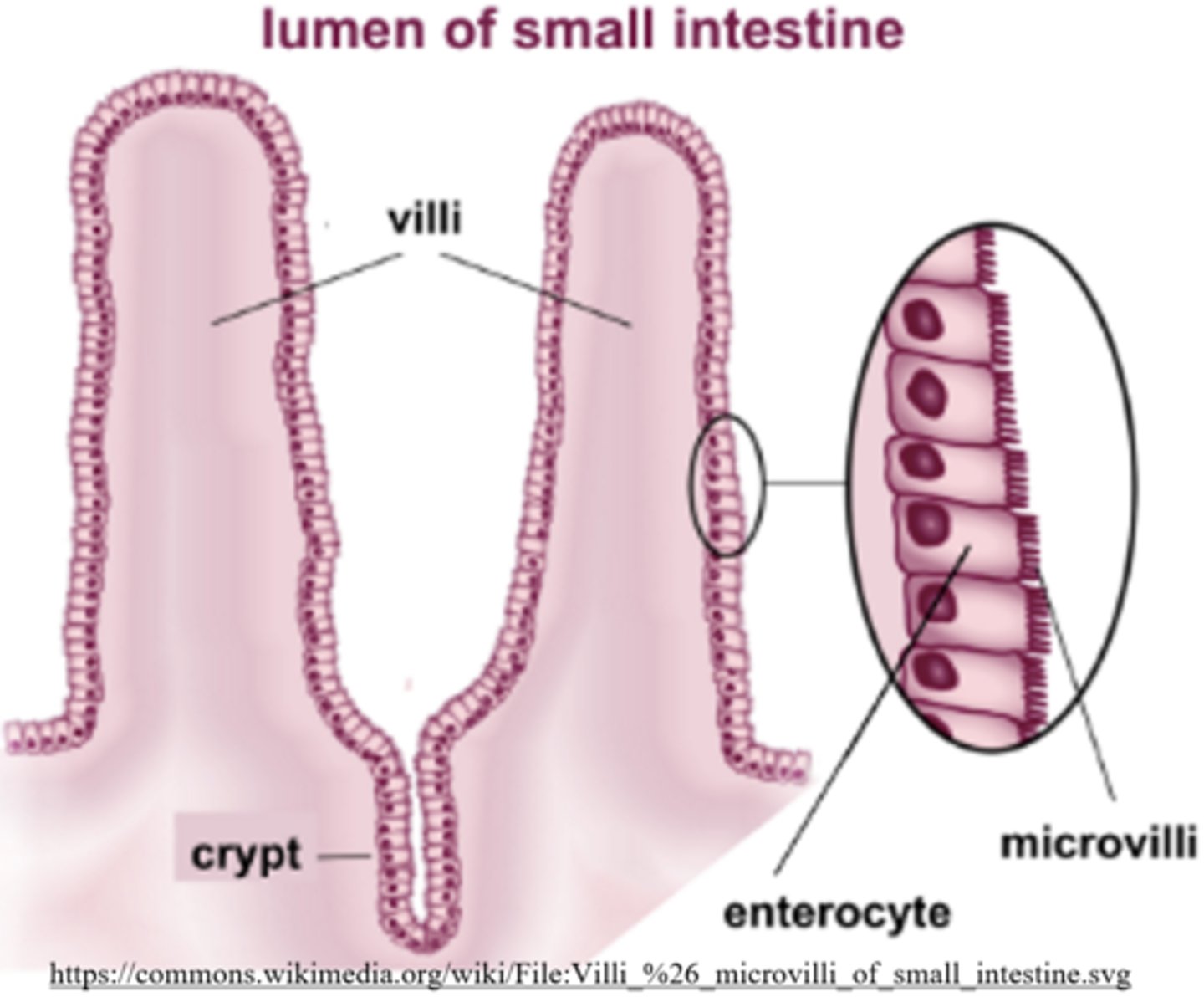
what do villi do?
increase the surface area & efficiency of absorption in the small intestine (jejunum/ilium)
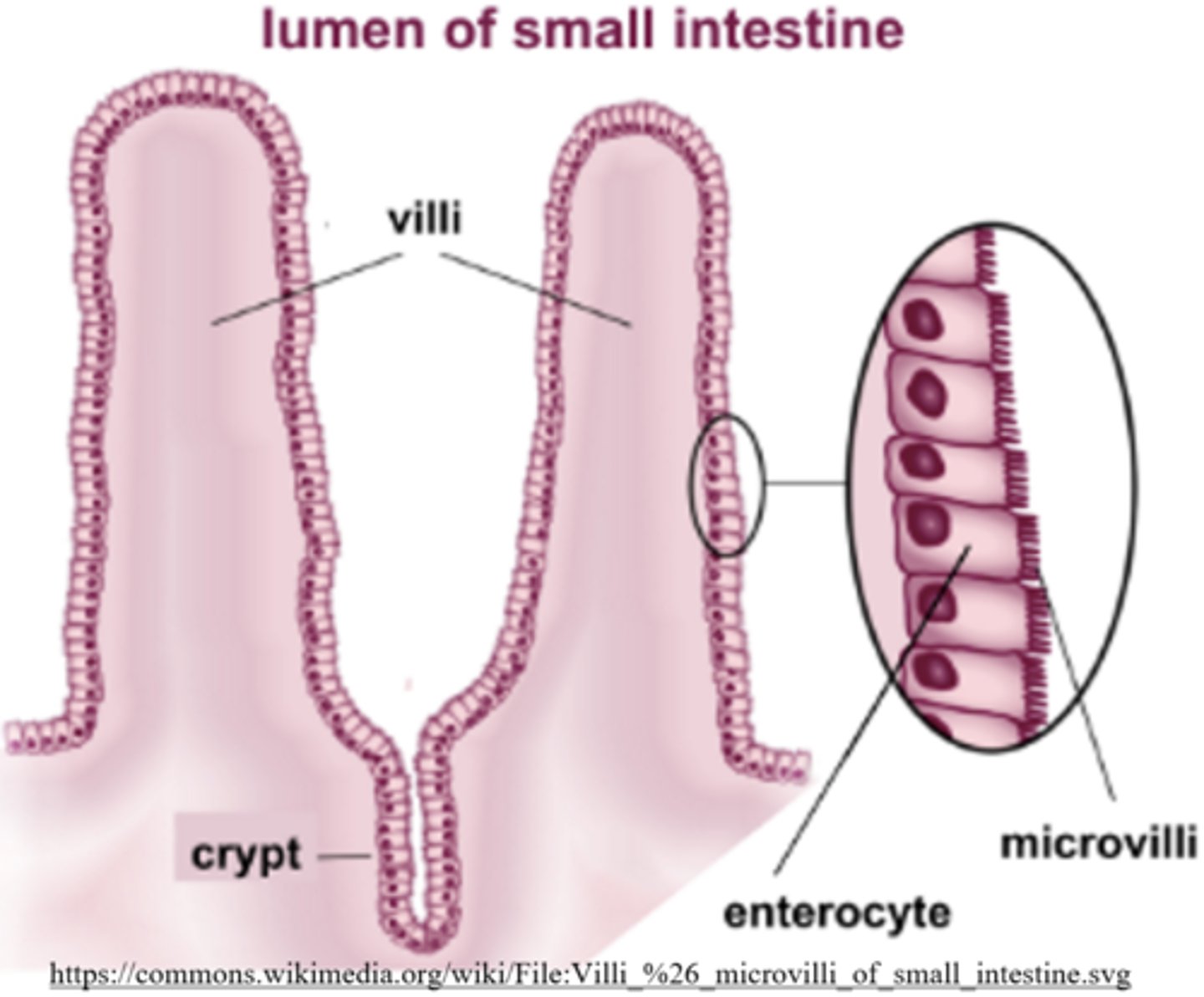
_____ are absorptive cells that make up villi and are lined with microvilli
enterocytes
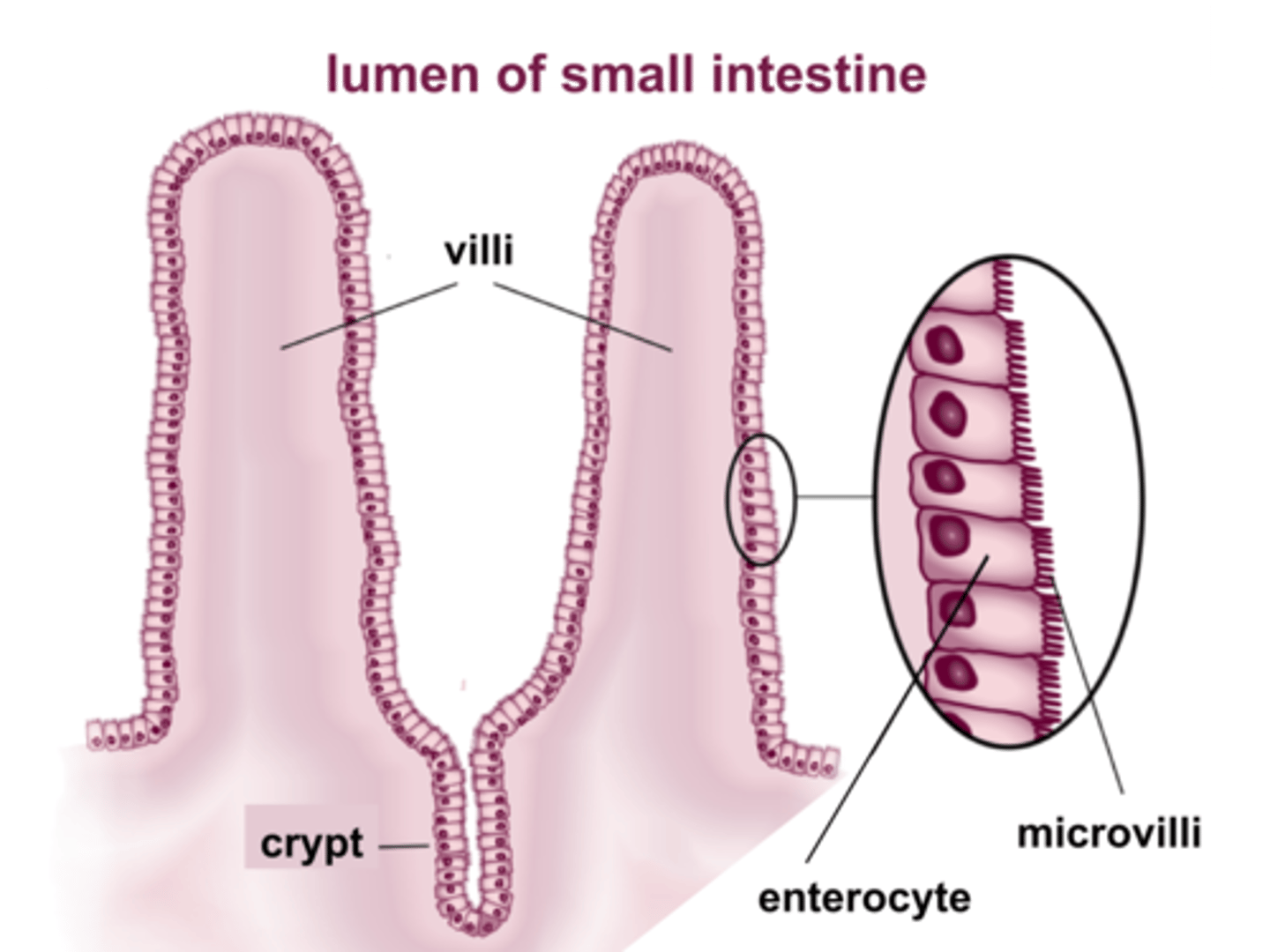
_____ further expand the surface area of the absorptive cells of the small intestine to aid in nutrient absorption
microvilli
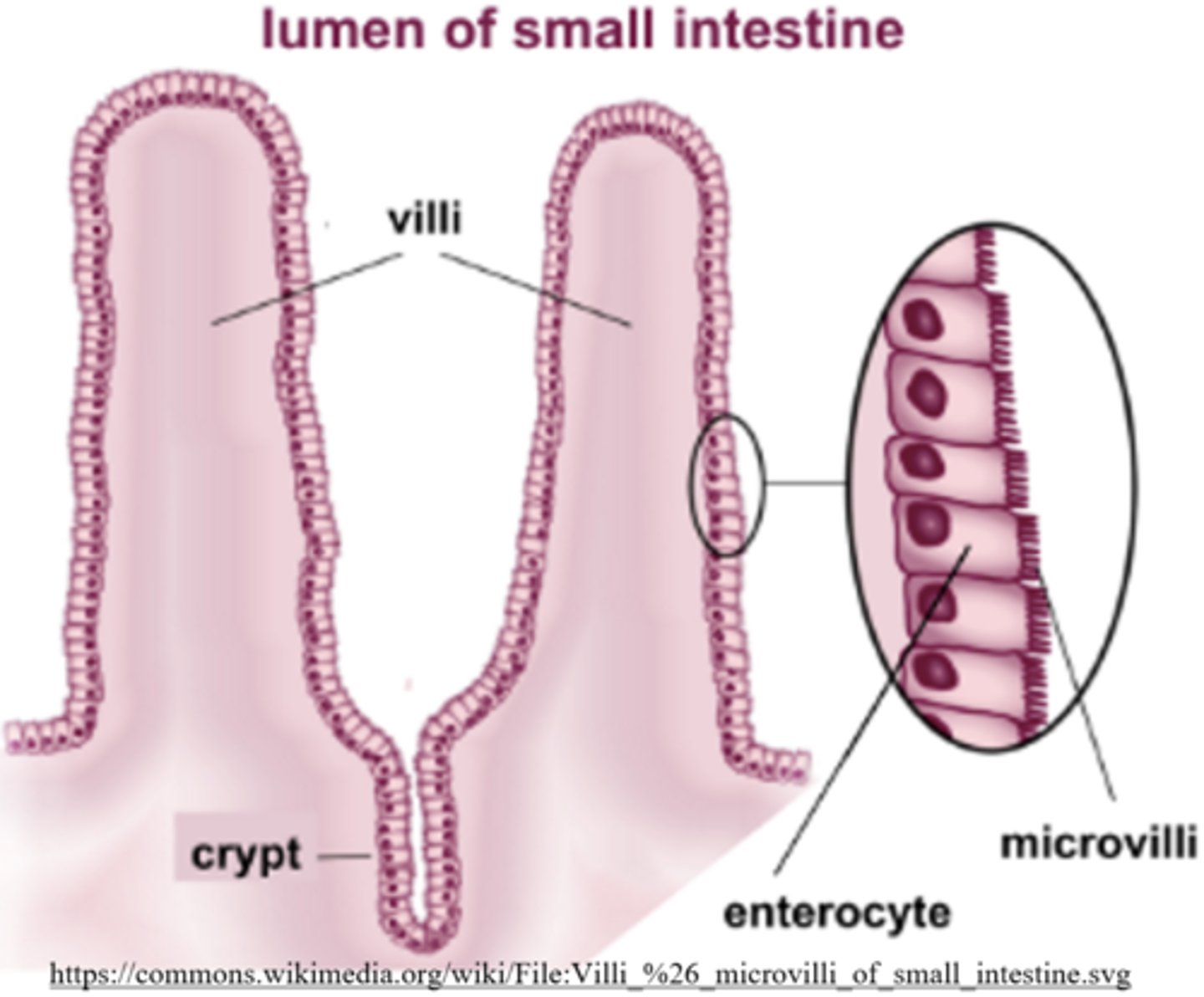
what are the vessels of a villus?
blood capillaries and a lacteal
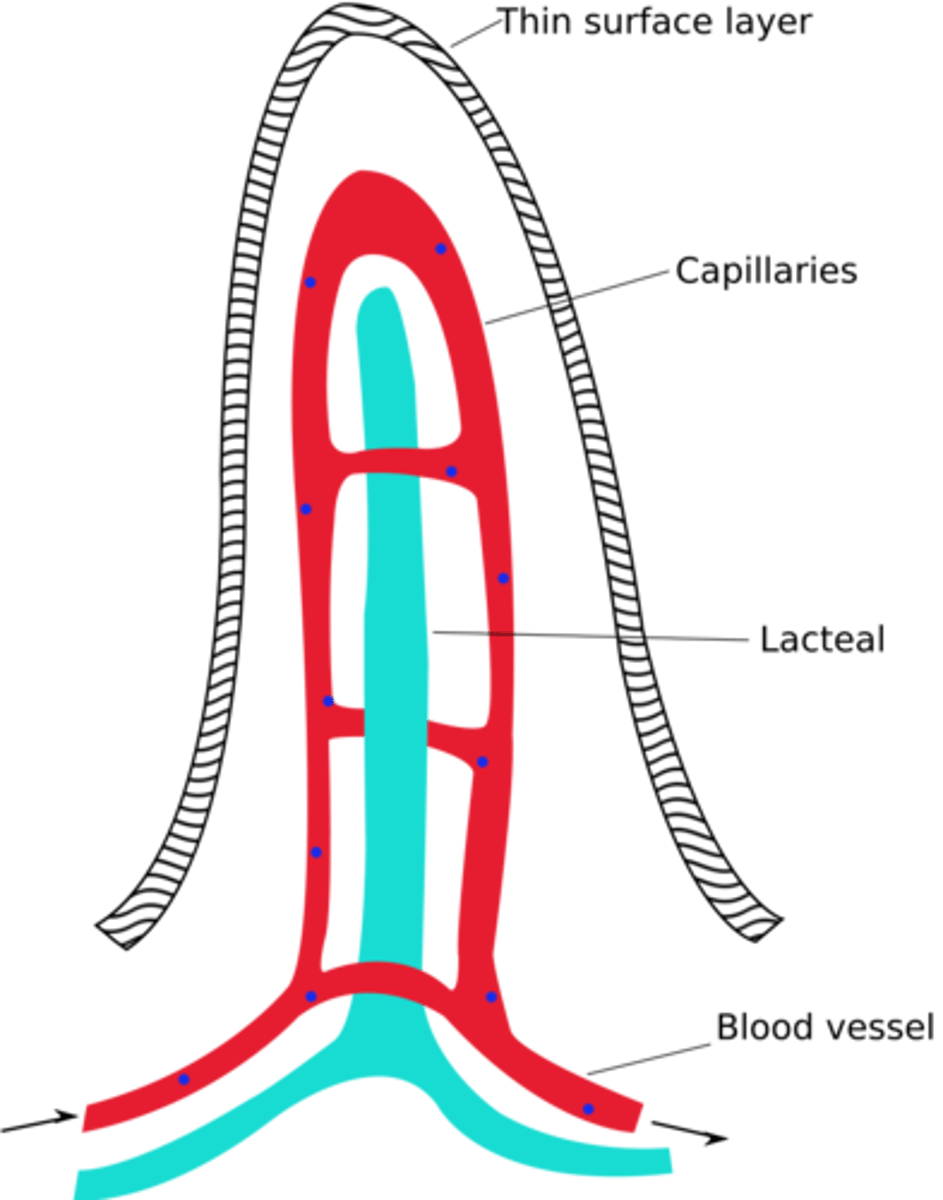
what types of nutrients are absorbed by capillaries of a small intestine villus?
glucose and amino acids
what types of nutrients are absorbed by the lacteal of a small intestine villus?
lipids
what are 3 important roles of the liver?
blood maintenance; glucose metabolism; protein metabolism
the _____ stores, filters, and detoxifies blood coming from the digestive system
liver
the liver destroys _____ and _____
old RBCs; bacteria
the _____ connects the small intestine to the liver, allowing for a fast diffusion of absorbed substances
hepatic portal system

what are the phagocytic cells in the liver, which are responsible for RBC/bacteria destruction?
Kupffer cells
bilirubin is a pigment that gives _____ its yellowish-brown color
bile
bilirubin is produced due to _____ breakdown
hemoglobin
_____ is a yellowish skin appearance due to high levels of bilirubin in the blood
jaundice
_____ is typically caused by obstruction of the bile duct, liver disease, or excessive RBC breakdown
jaundice
what are the 3 mechanisms the liver uses to maintain blood glucose levels?
glycogenesis; glycogenolysis; gluconeogenesis
in _____, excess glucose is converted into glycogen
glycogenesis
2/3 glycogen is stored in the liver and 1/3 is stored in _____
skeletal muscle
_____ occurs when glycogen is broken down into glucose monomers
glycogenolysis
the _____ is the only tissue that can release glucose to other tissues
liver
in _____, the liver converts glycerol and amino acids into glucose
gluconeogenesis
the _____ synthesizes plasma proteins from absorbed amino acids
liver
the liver can synthesize _____ amino acids
non-essential
the liver is responsible for the _____ of amino acids, which releases ammonia
oxidative deamination
what happens to the ammonia that is removed from amino acids during oxidative deamination?
it is converted to urea at the liver (for excretion)
give some example of liver plasma protein synthesis:
albumin is a major protein that is made almost exclusively by the liver; blood clotting factors are also produced by the liver
the _____ connects the small intestine and the large intestine
cecum
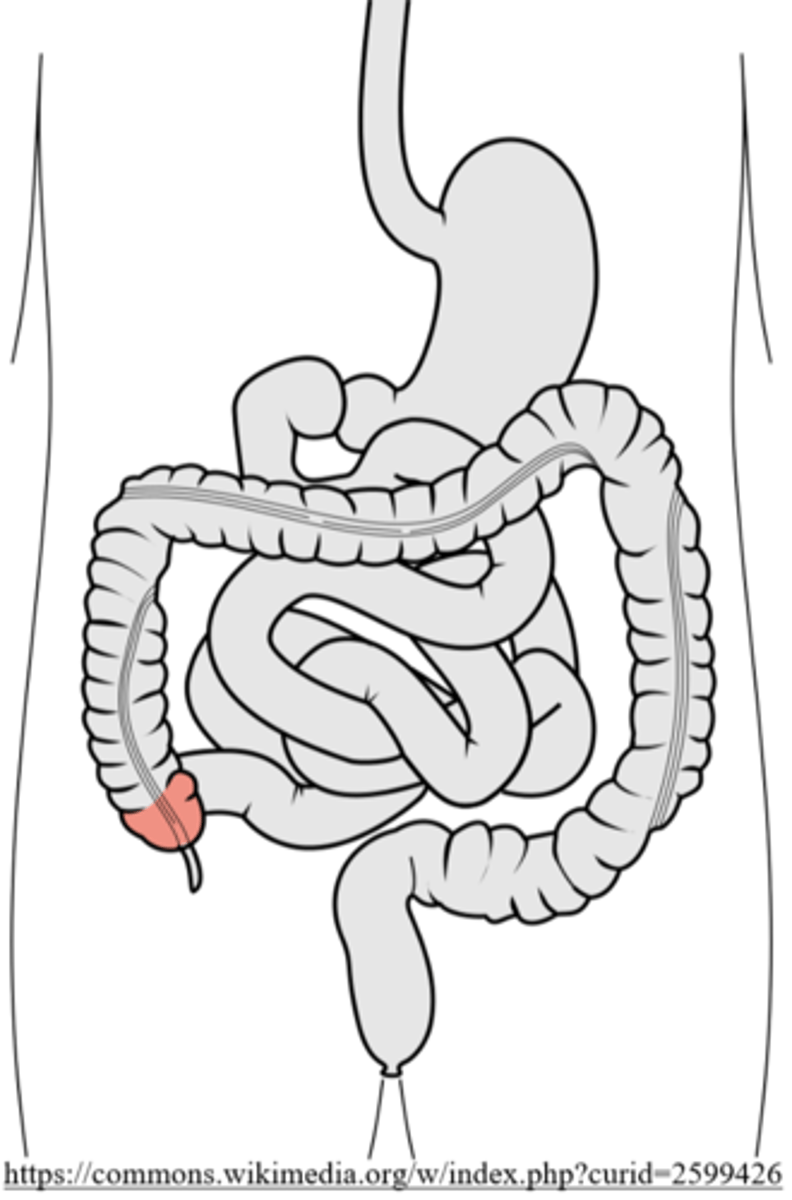
the _____ is an important structure for water and mineral absorption
cecum
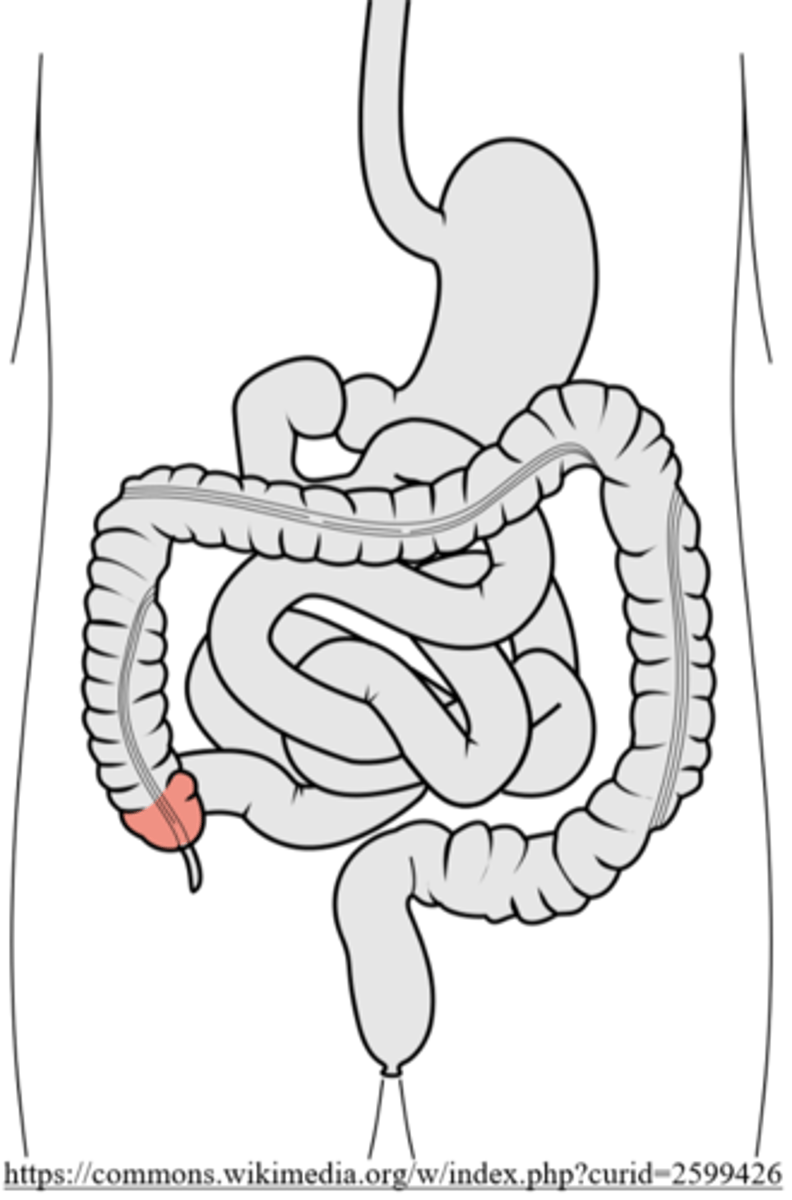
the _____ is a small finger-like projection of the cecum
appendix

the appendix is a _____ structure that can cause _____ when it becomes inflamed
vestigial; appendicitis
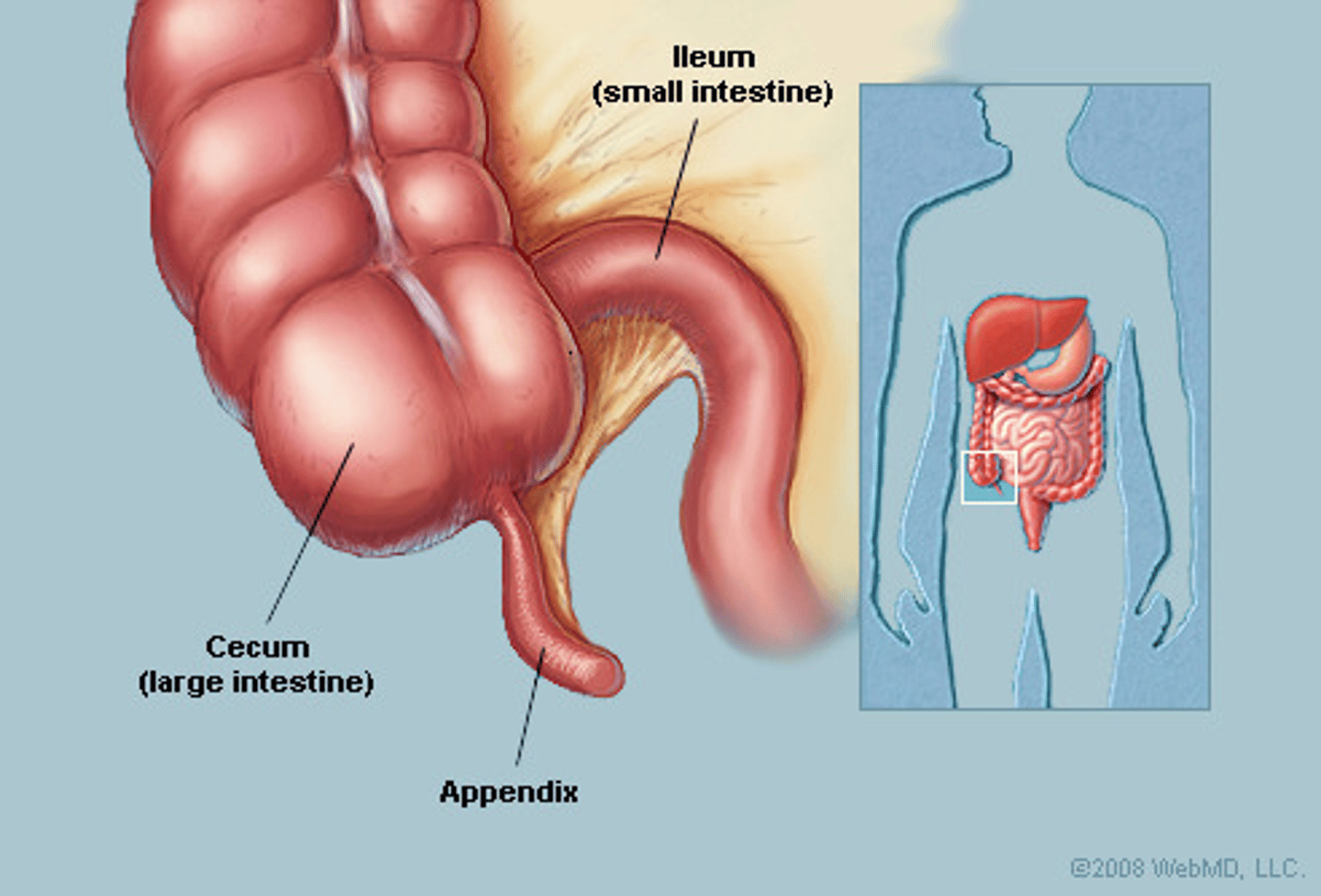
water is absorbed completely at the _____ of the large intestine, which comes after the cecum
colon
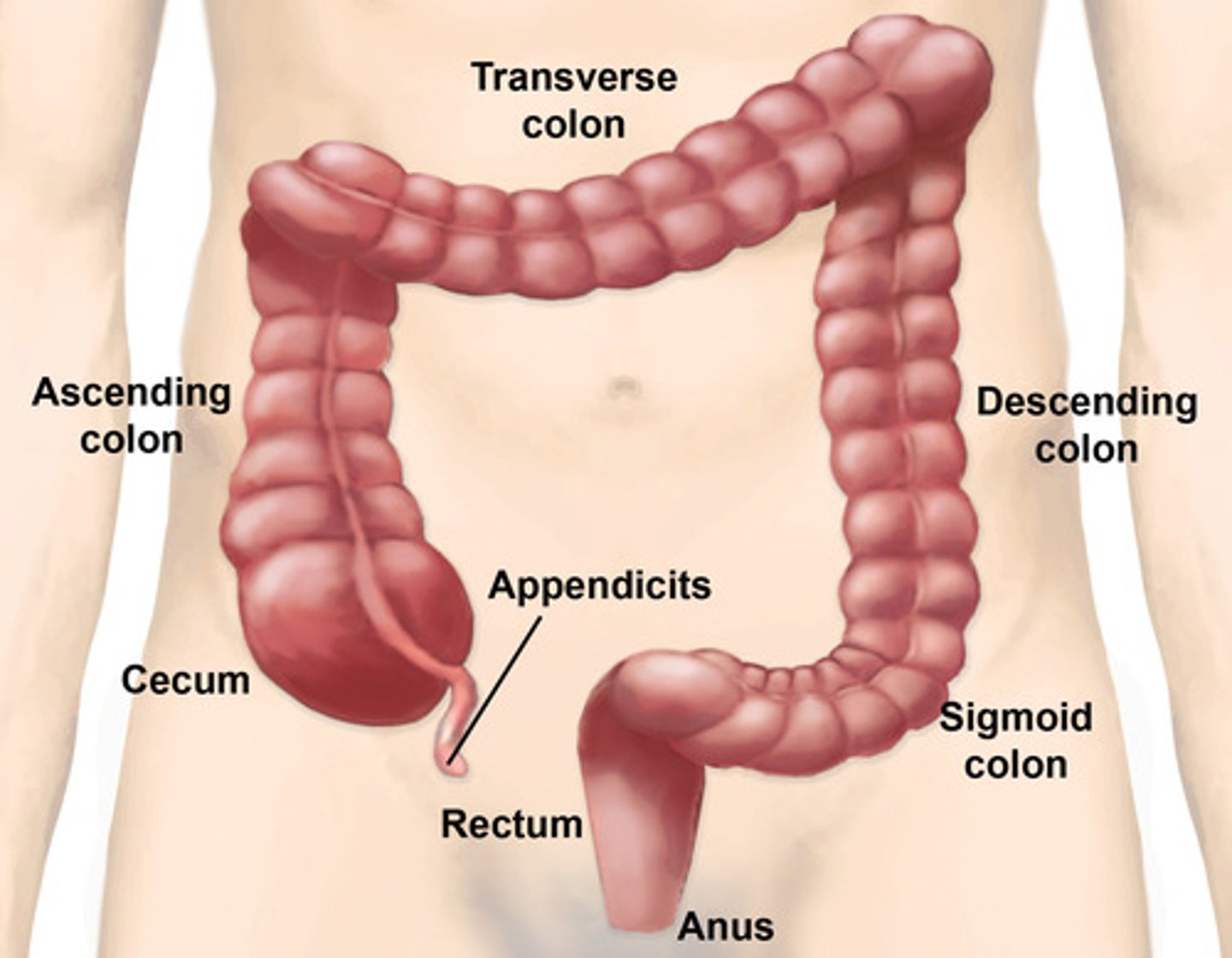
feces are stored in the _____ of the large intestine, which comes after the colon
rectum
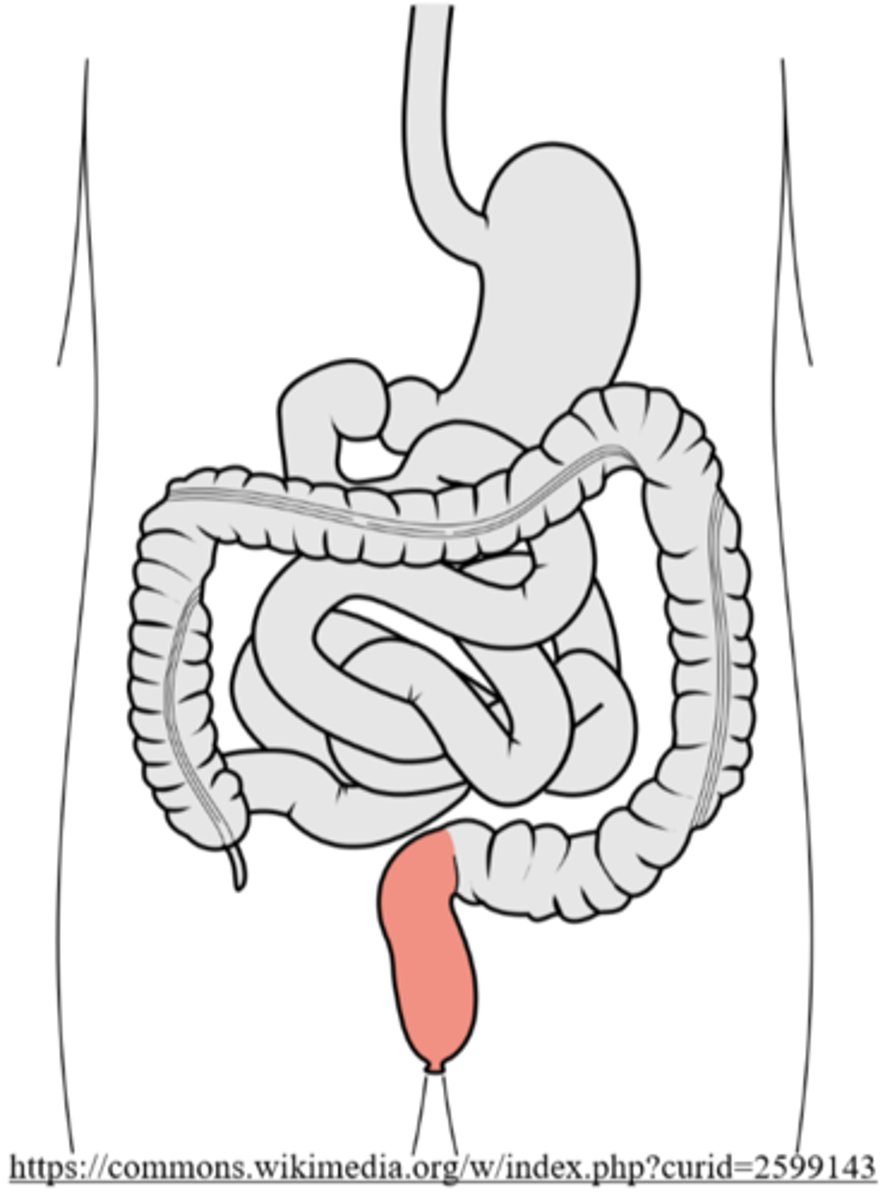
the _____ is the structure through which feces are released
anus

what are the 3 main functions of the large intestine
water absorption; mineral absorption; vitamin production and absoption
_____ occurs when too much water is absorbed by the large intestine
constipation
_____ occurs when too little water is absorbed by the large intestine
diarrhea